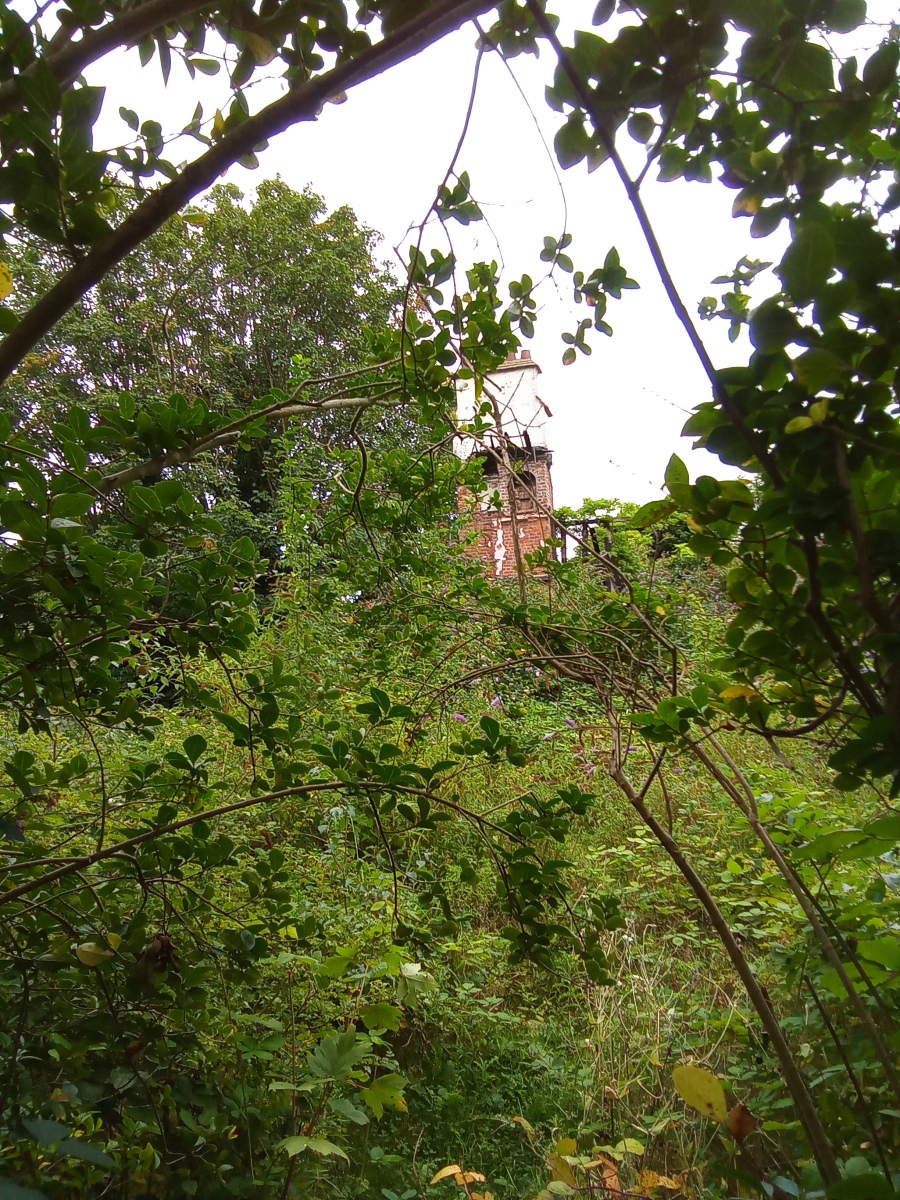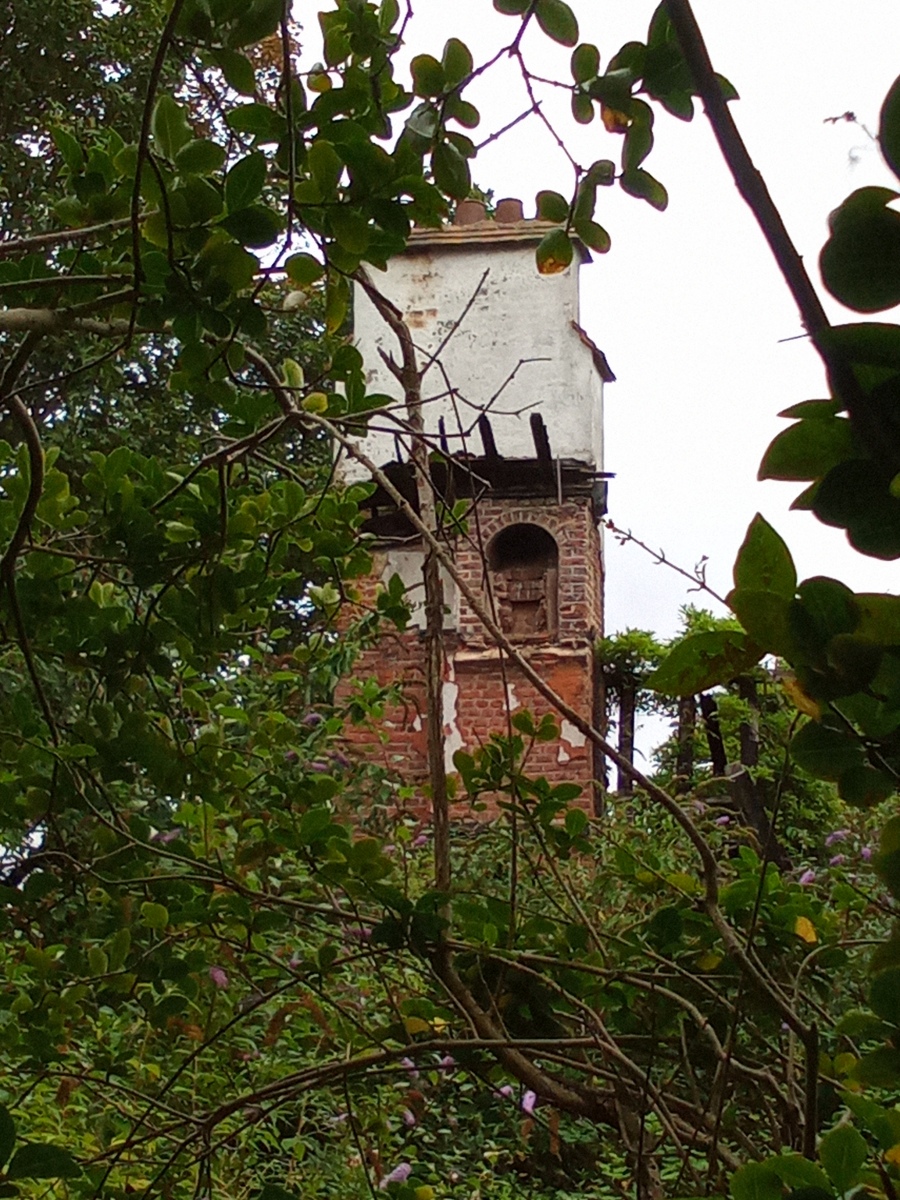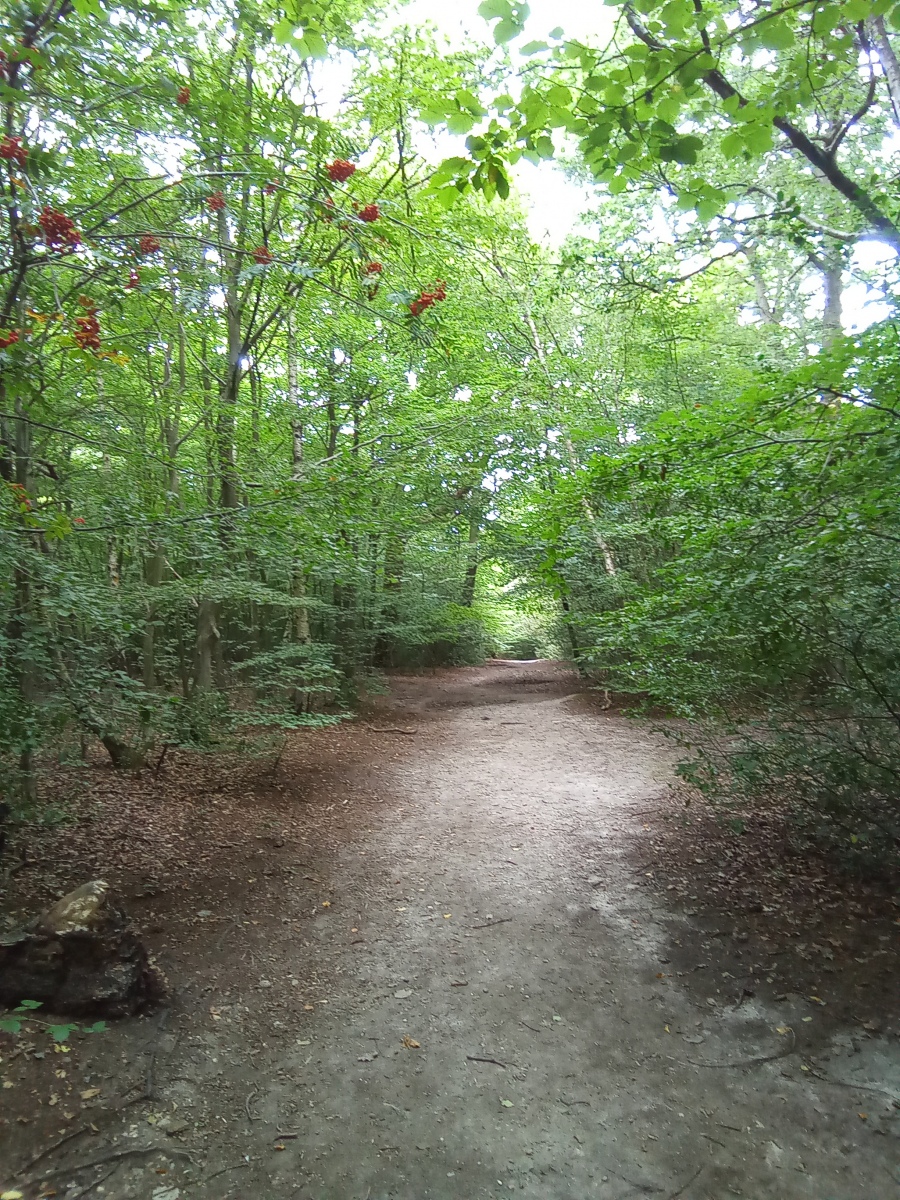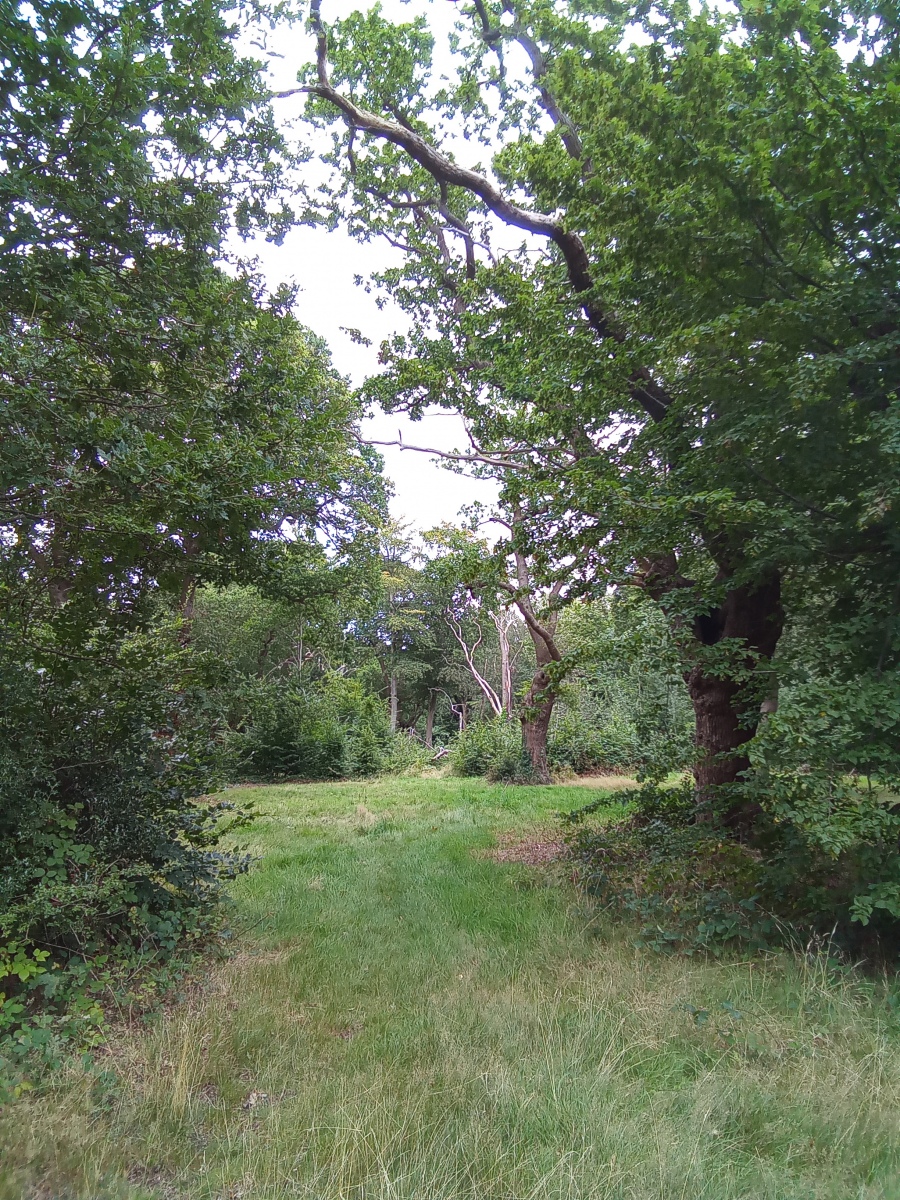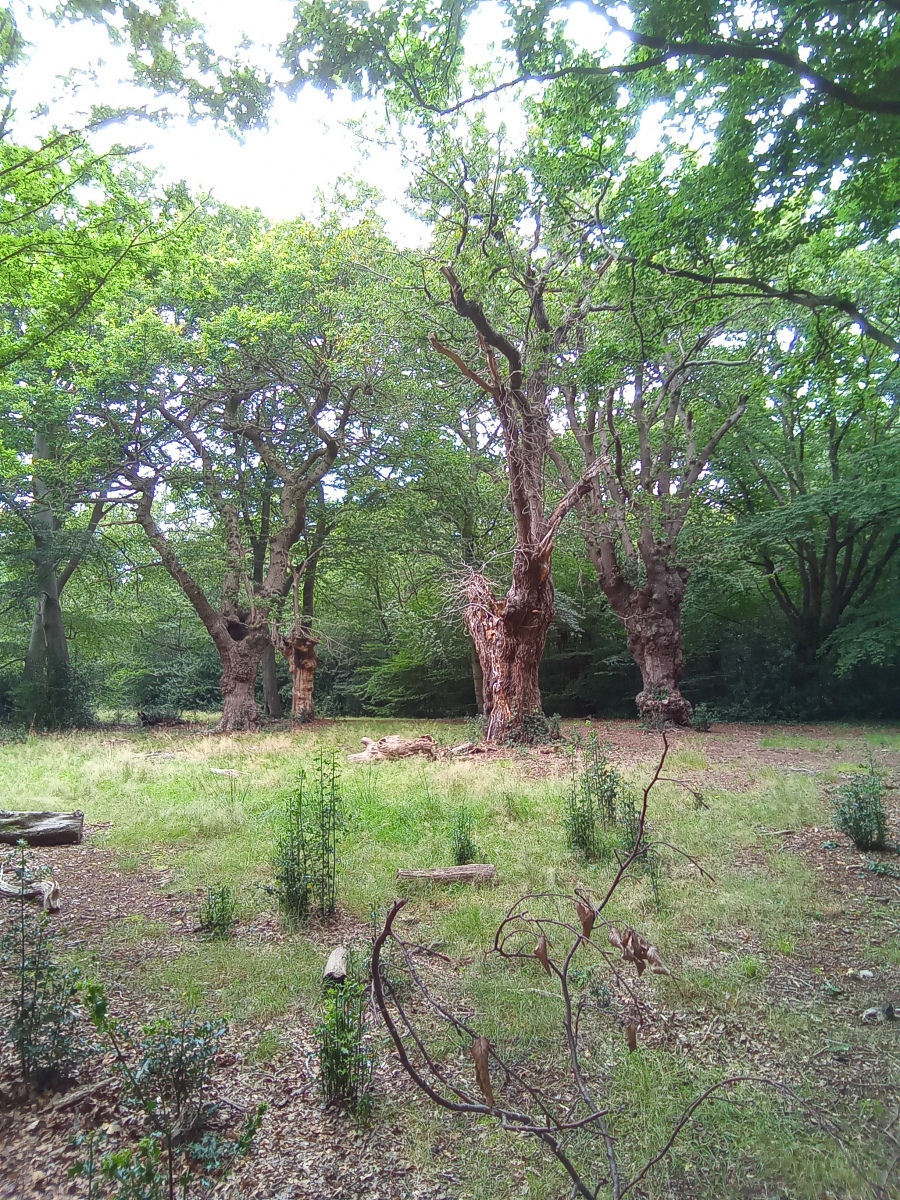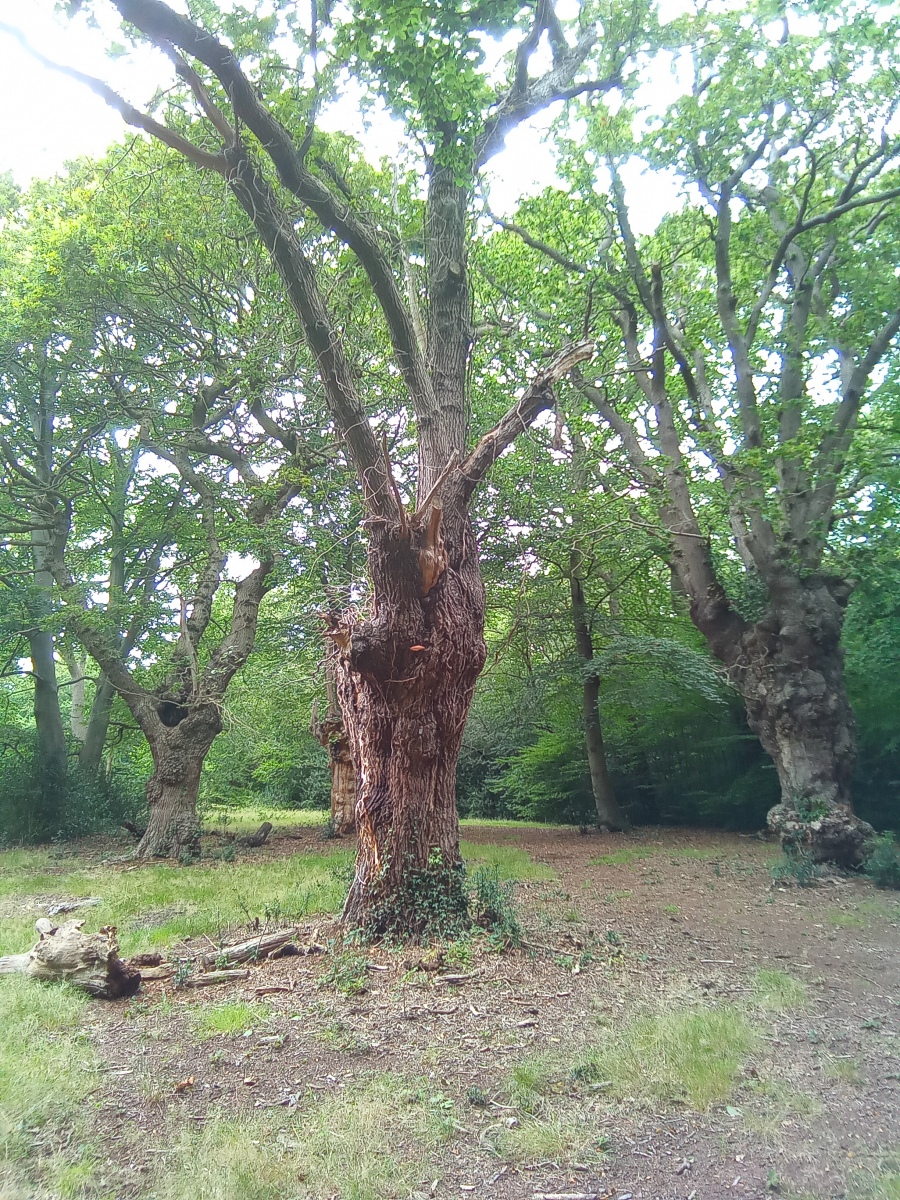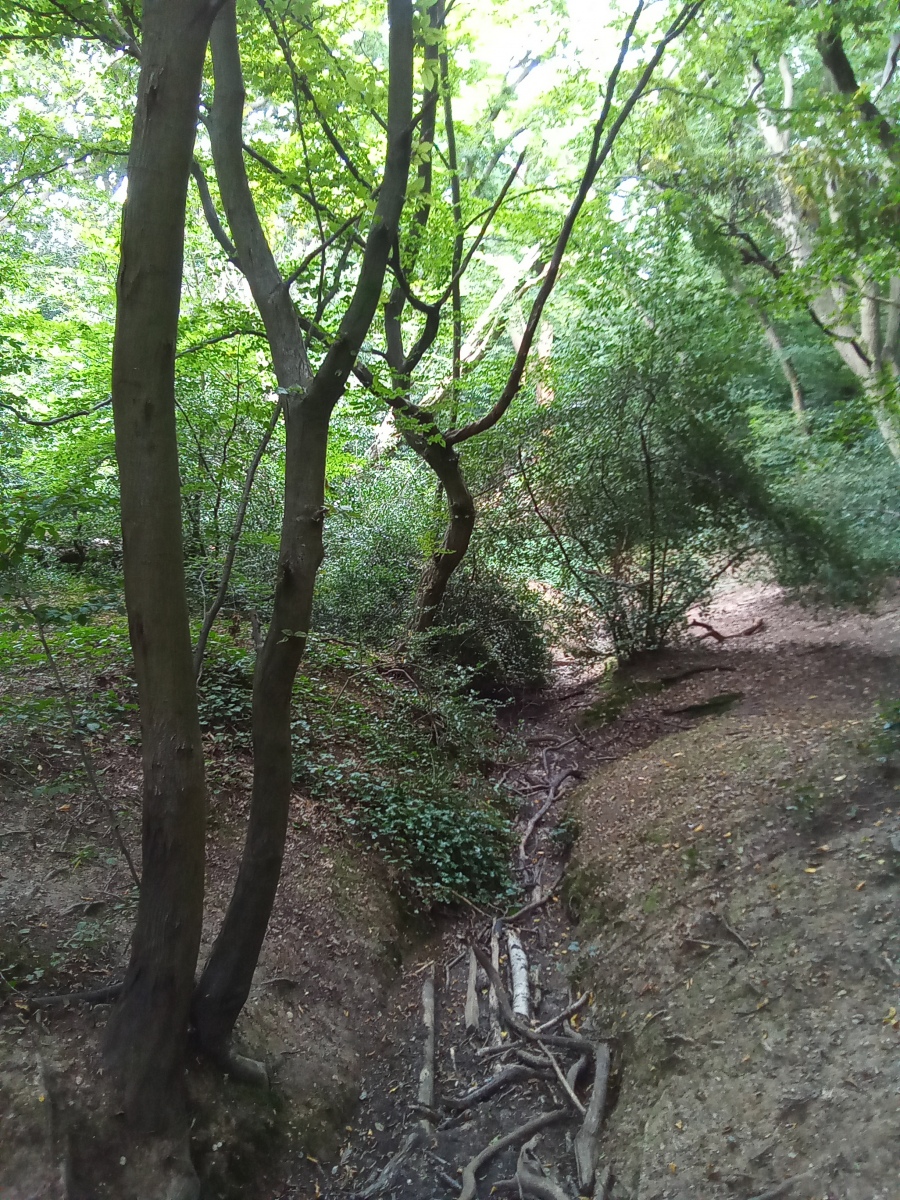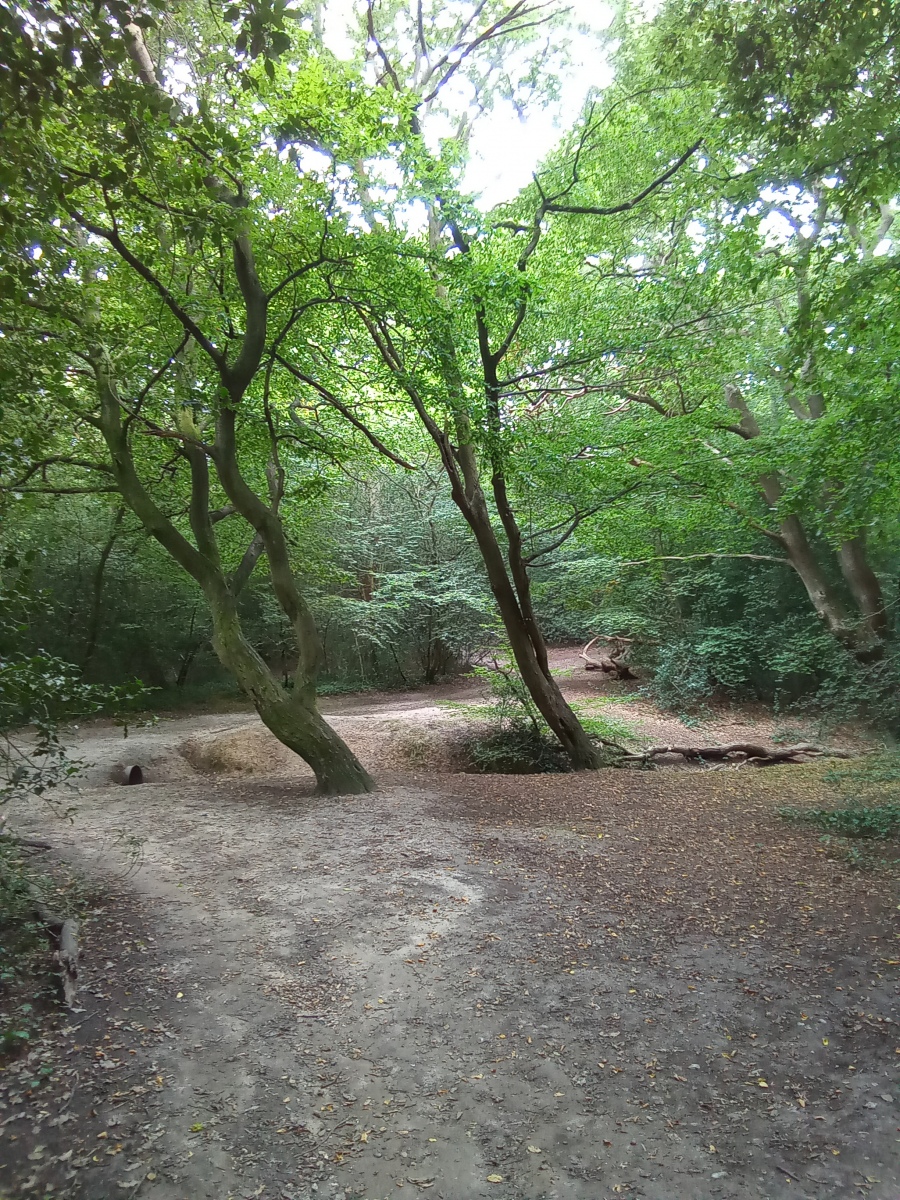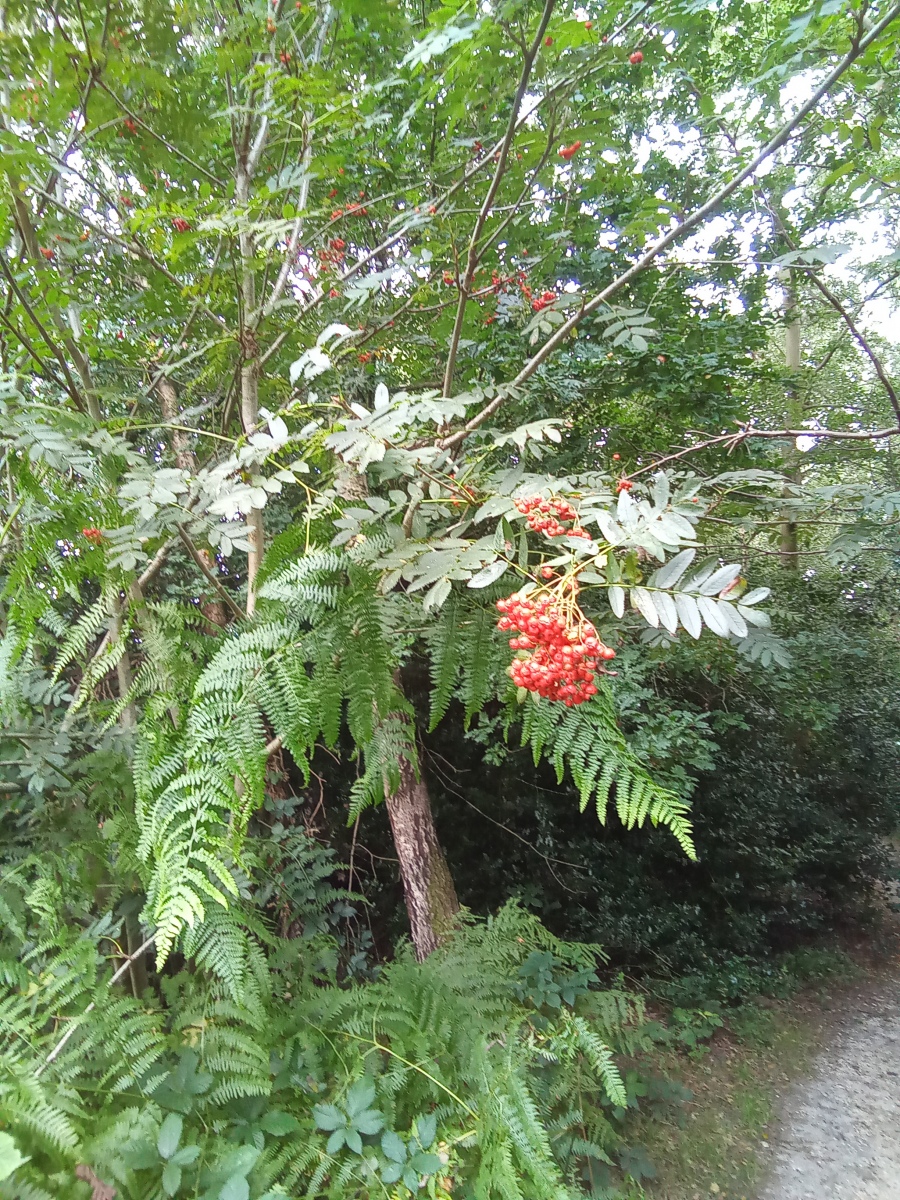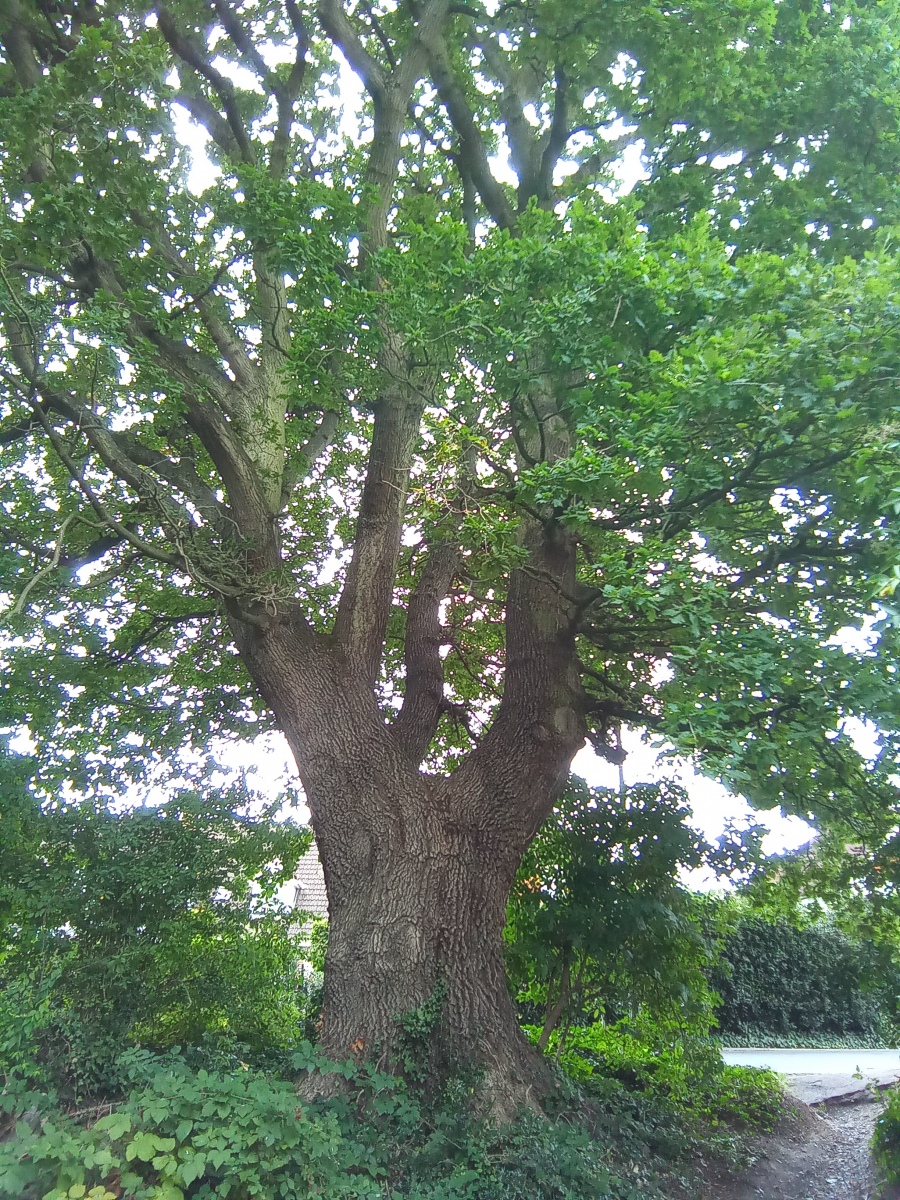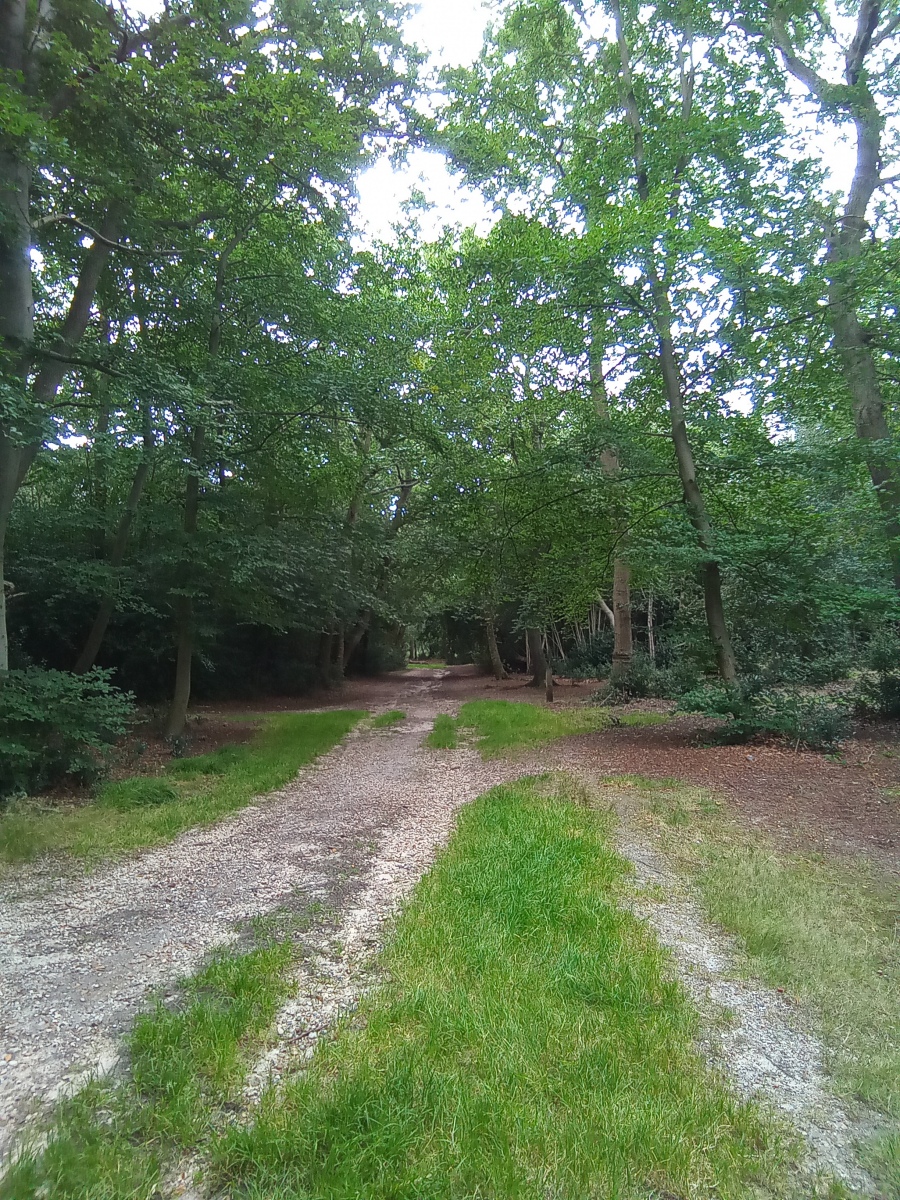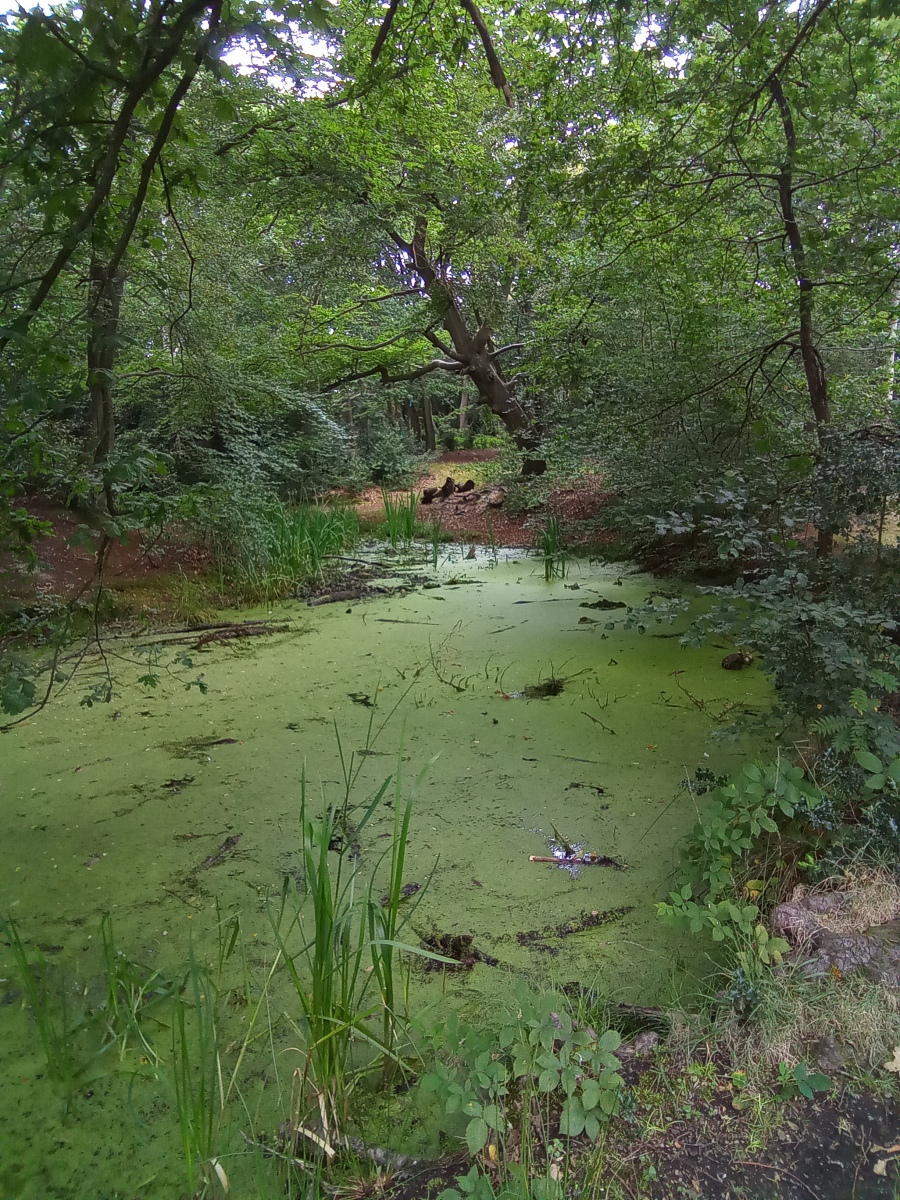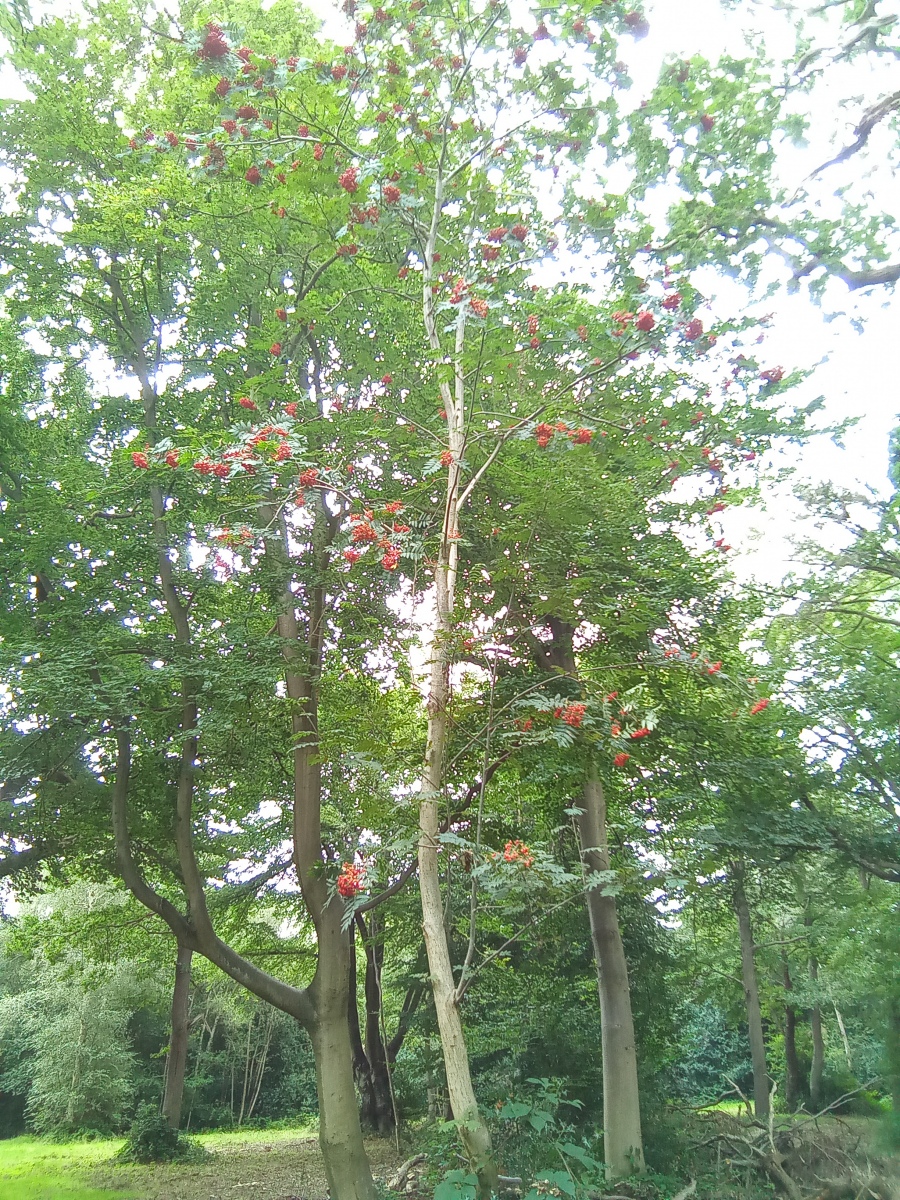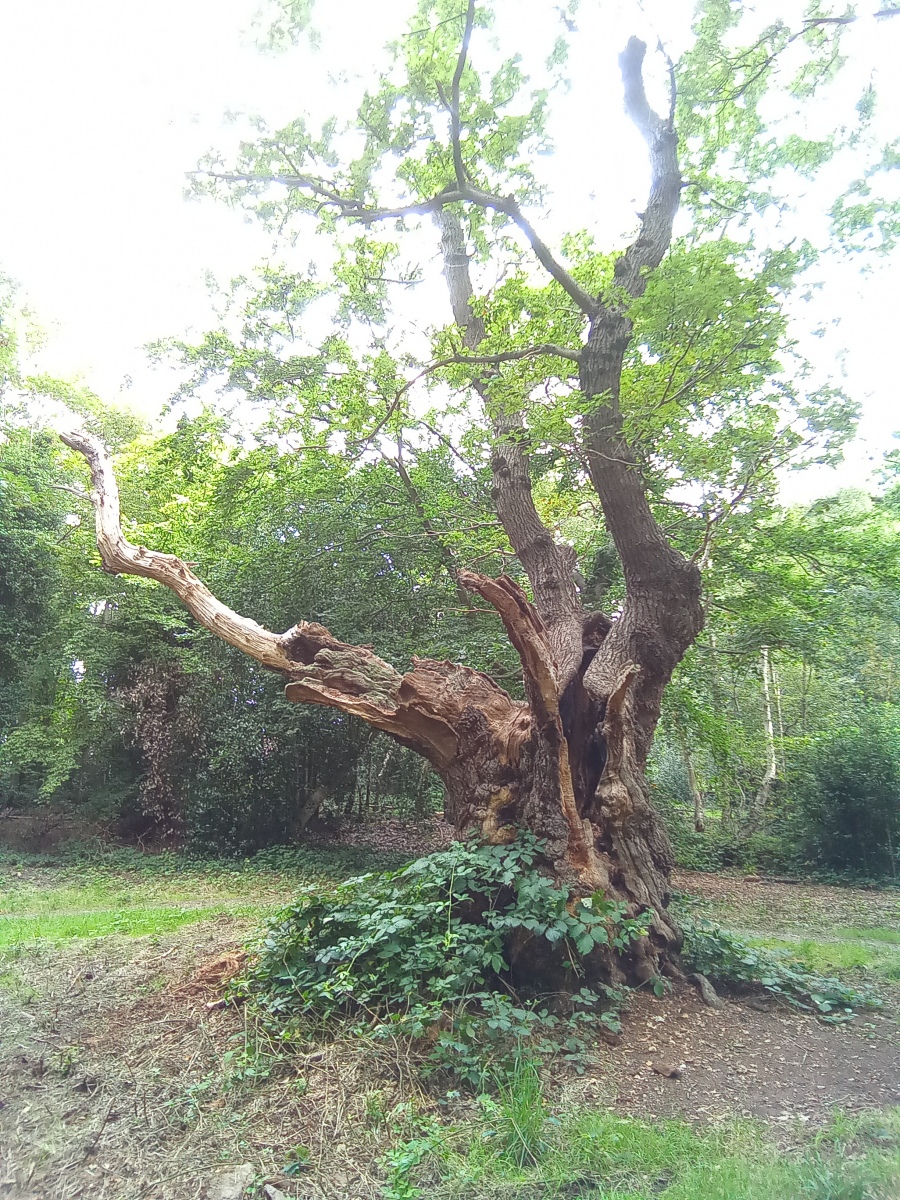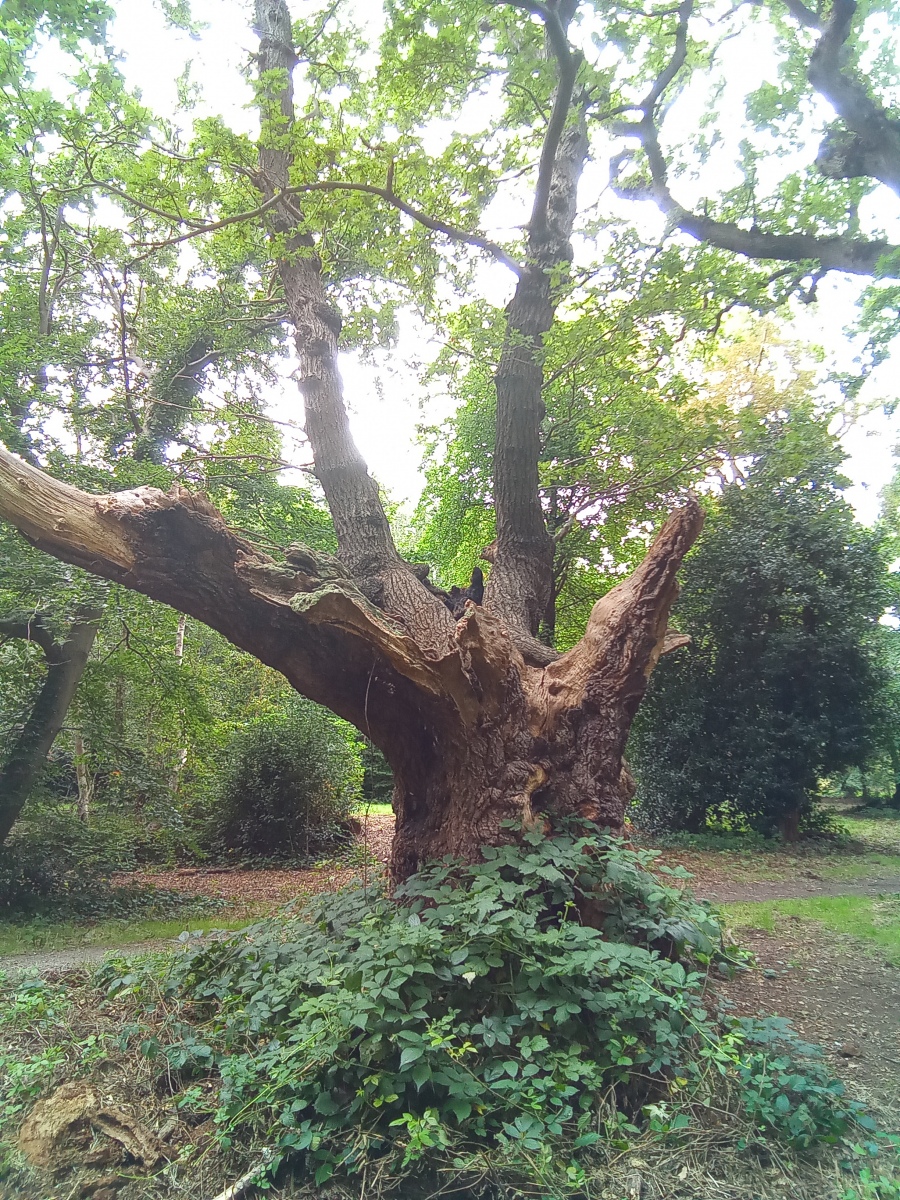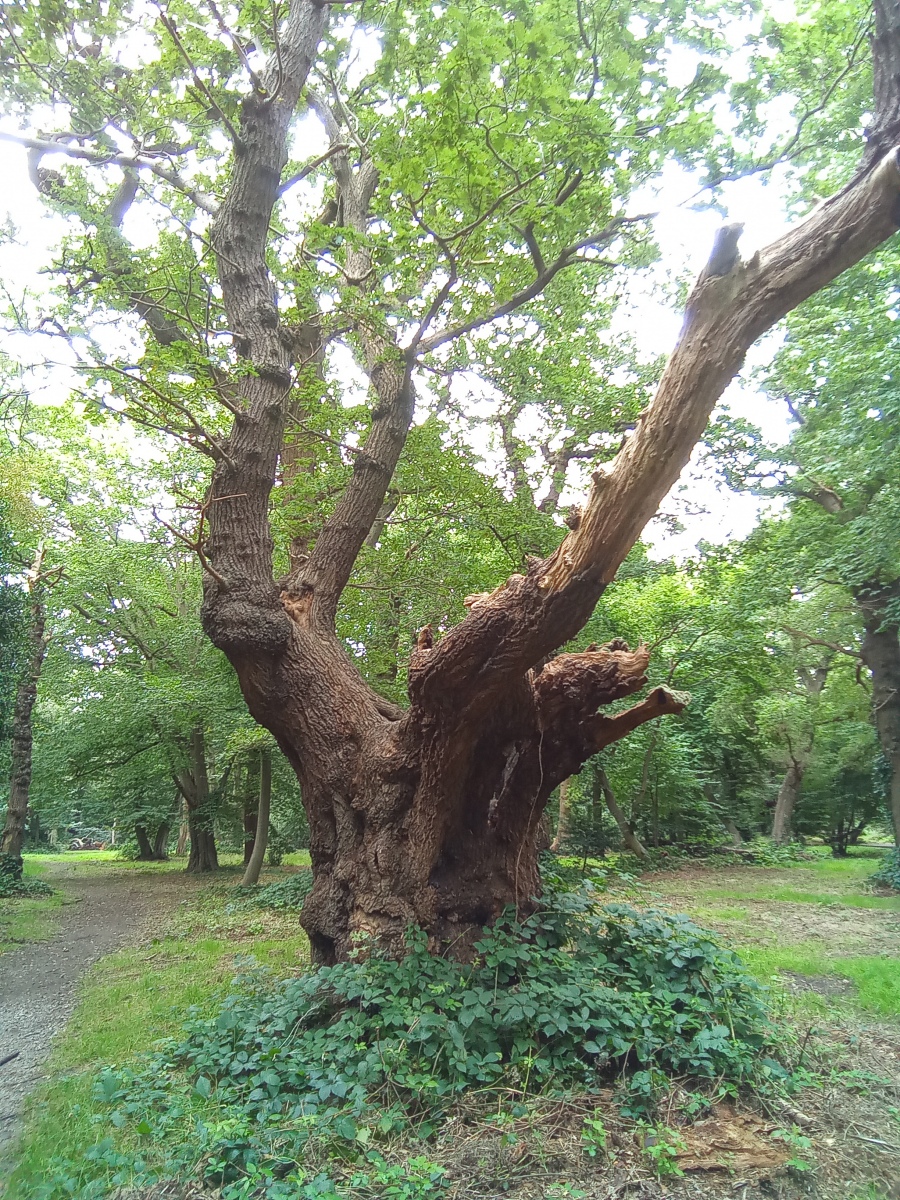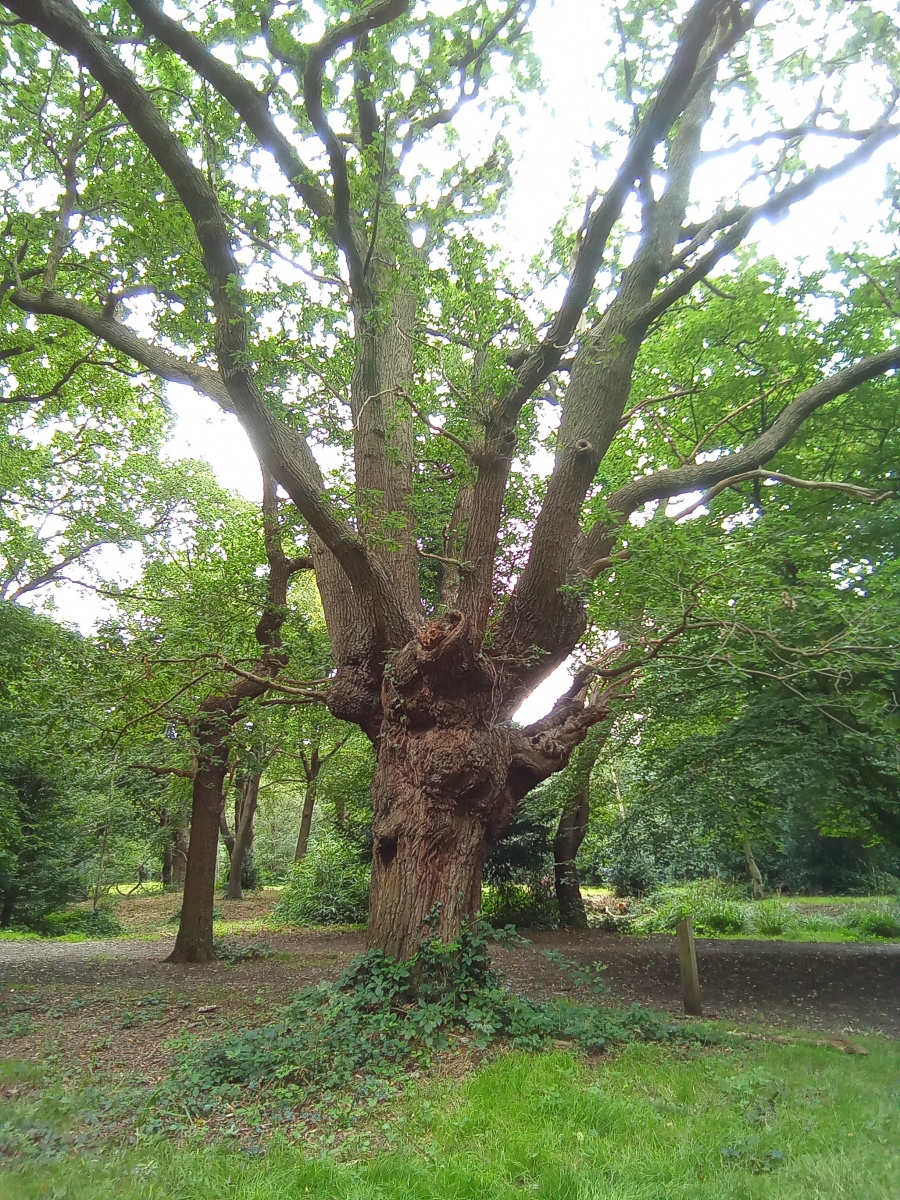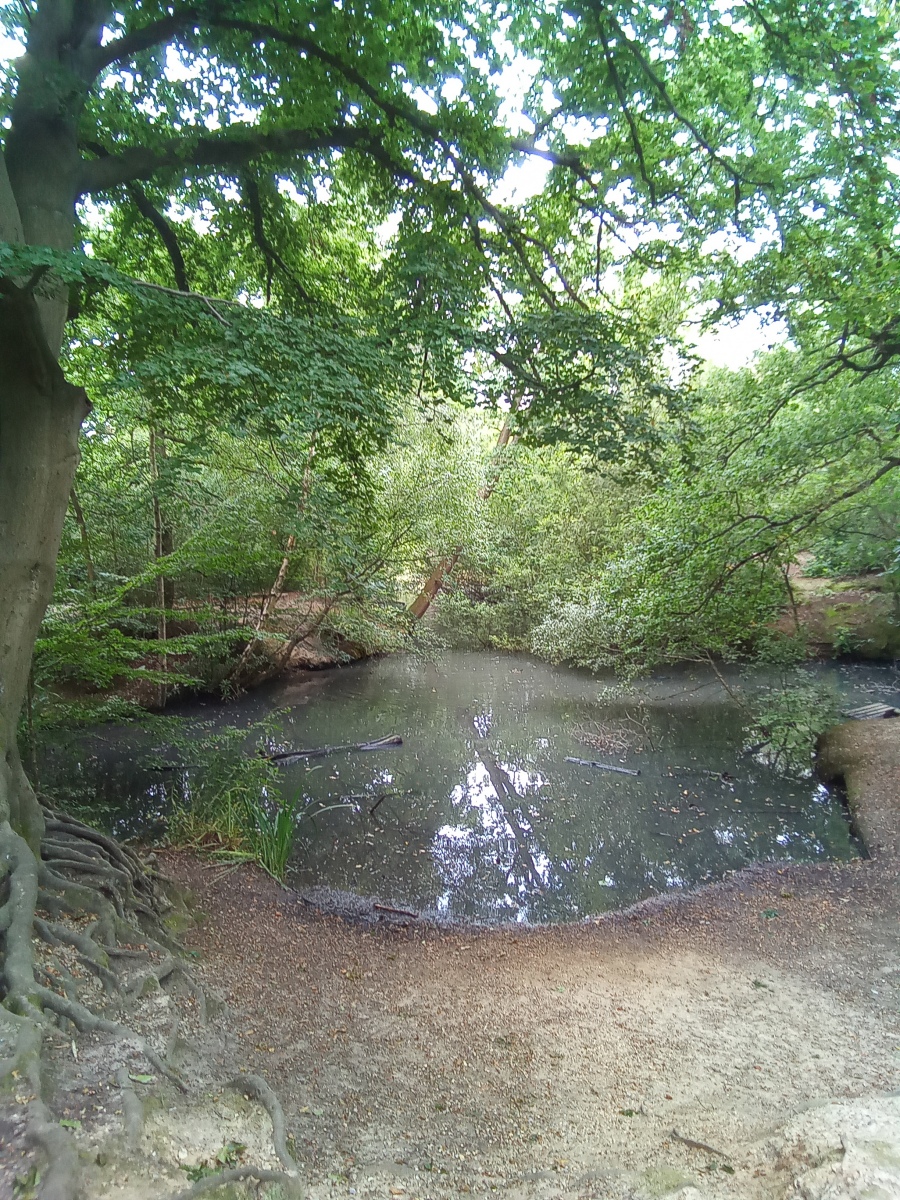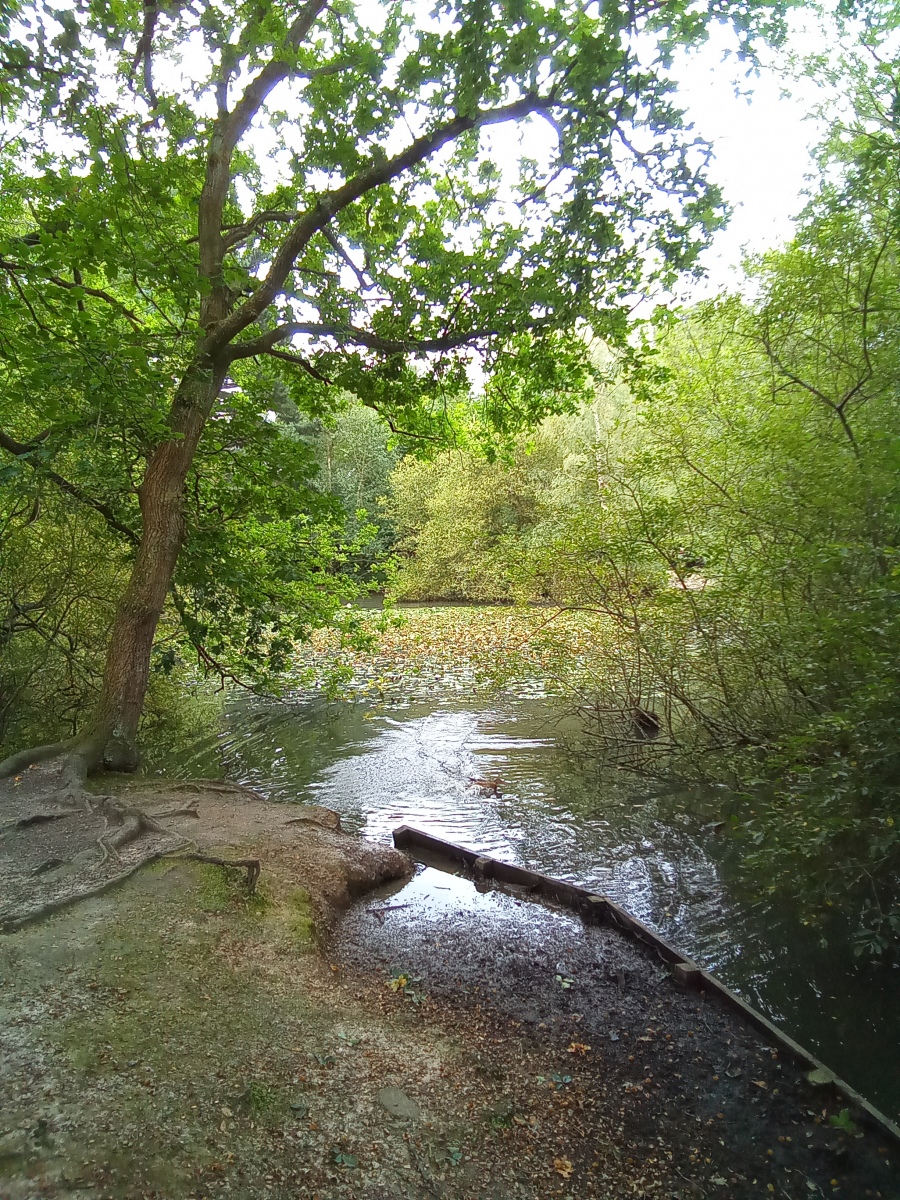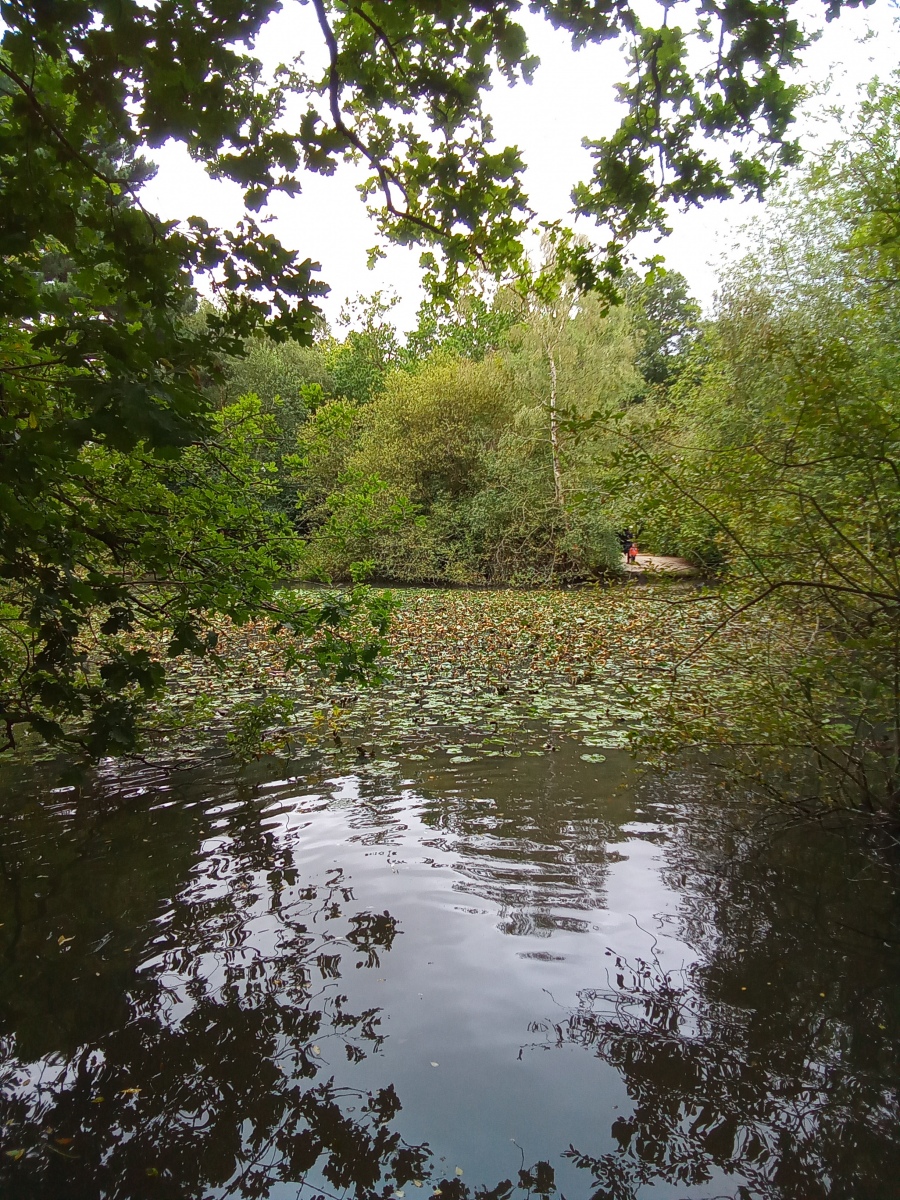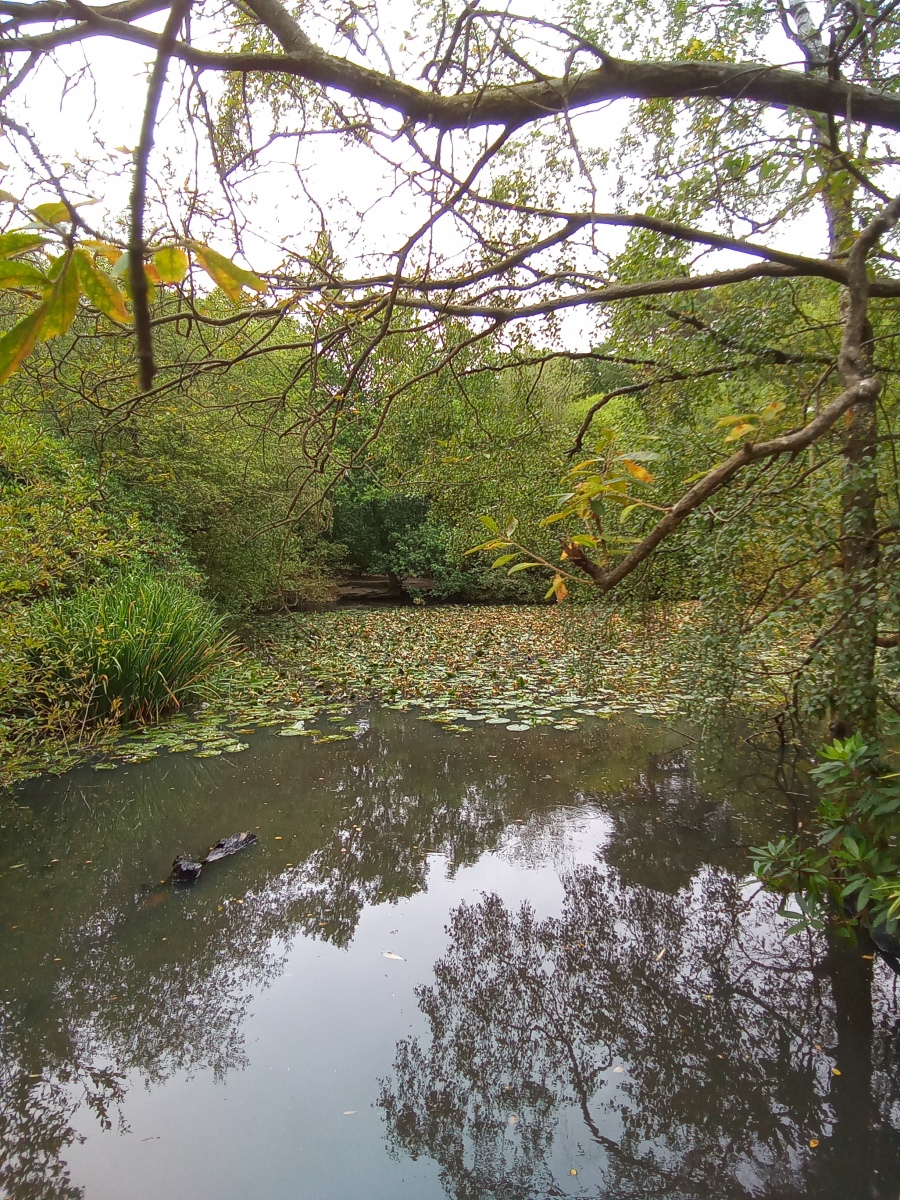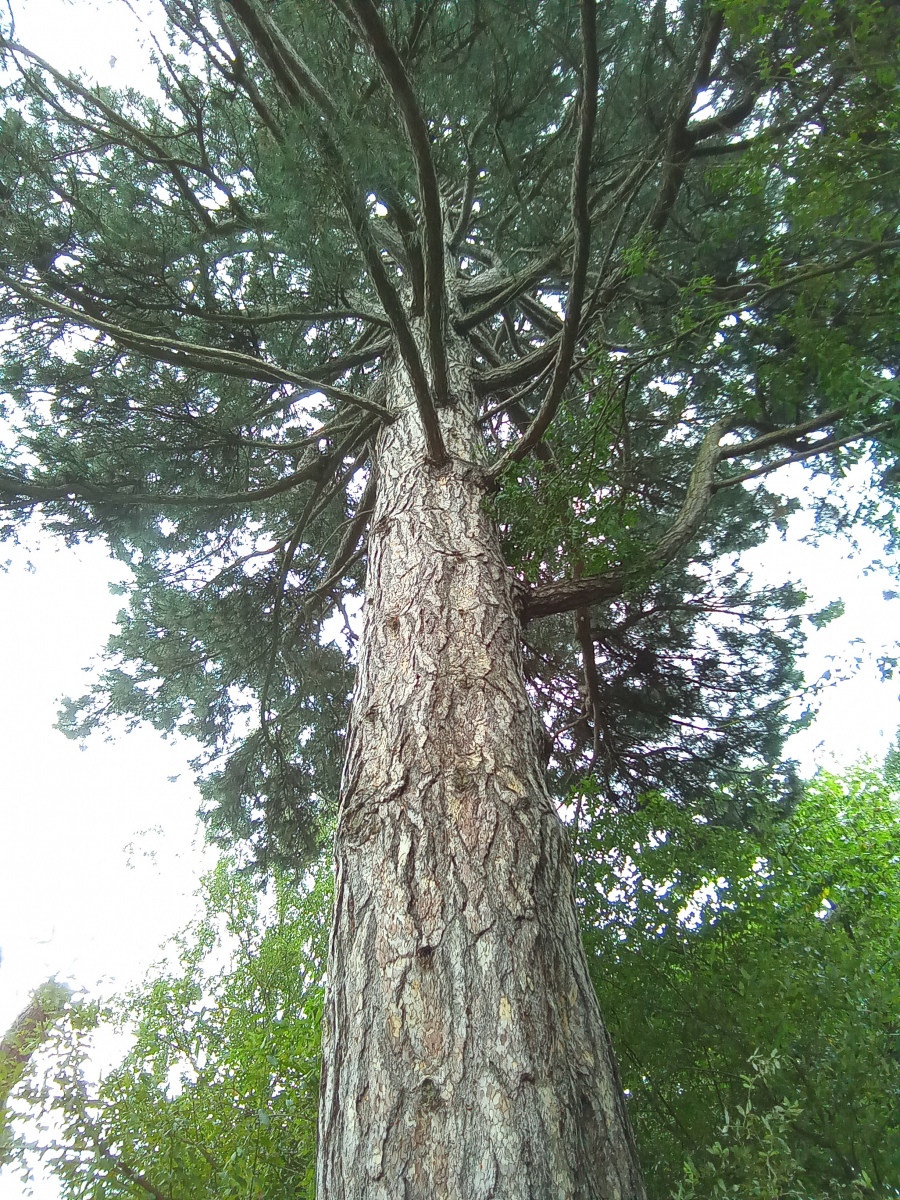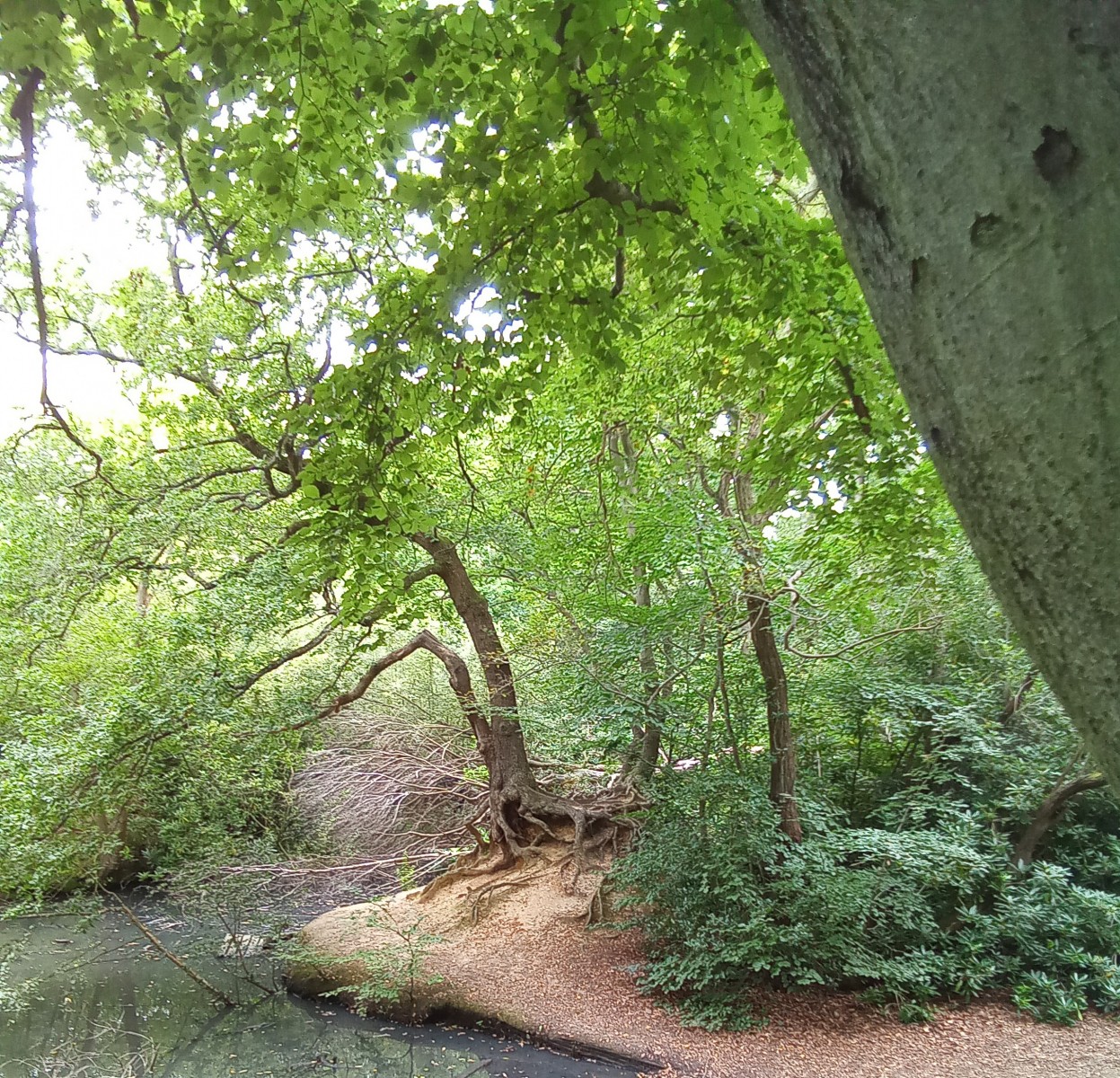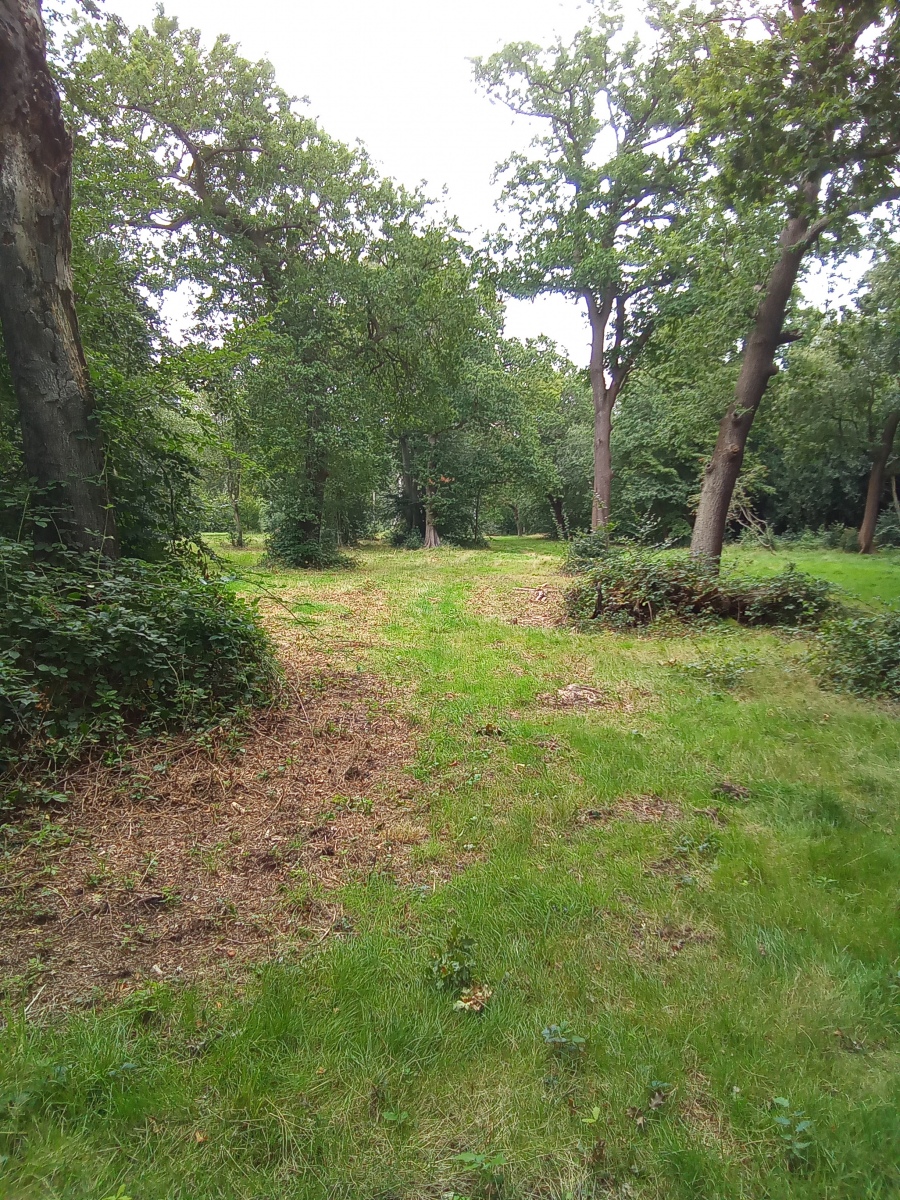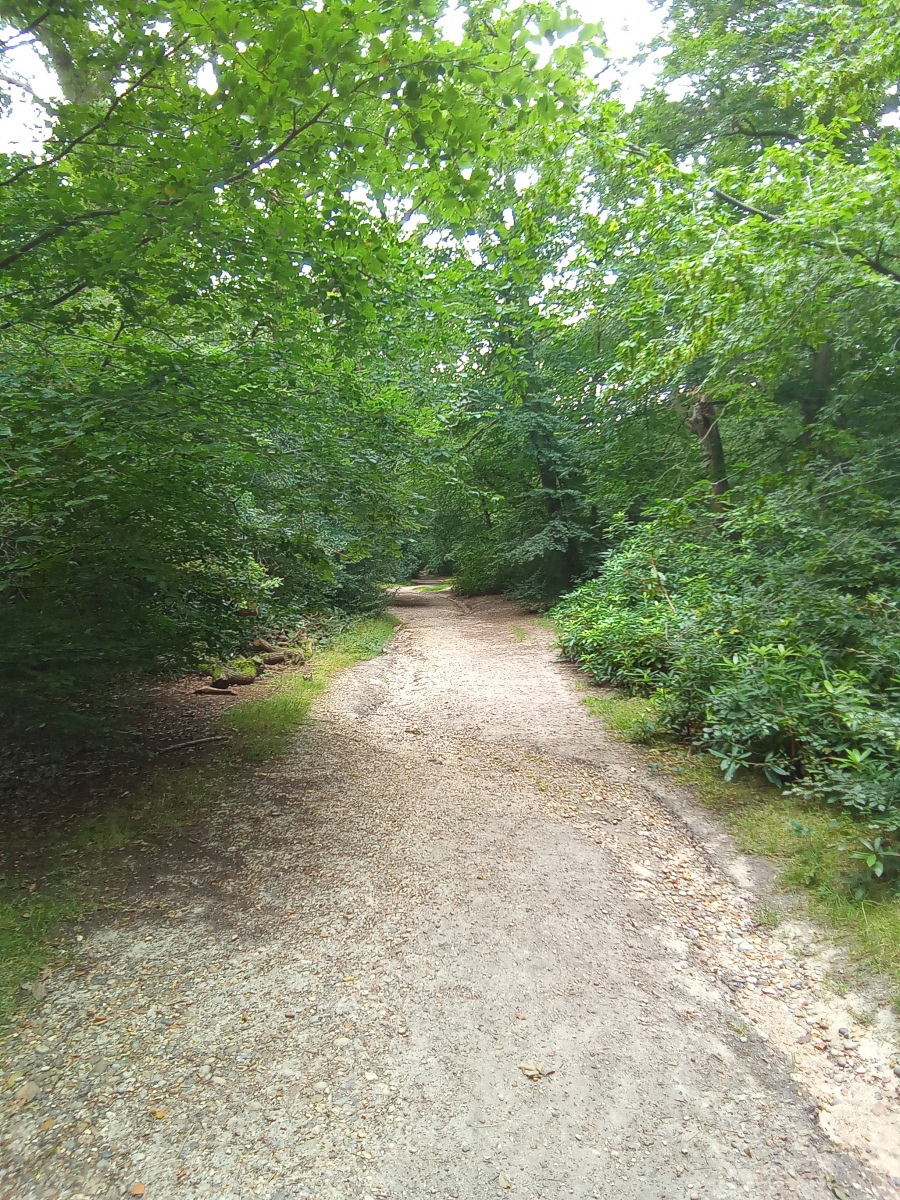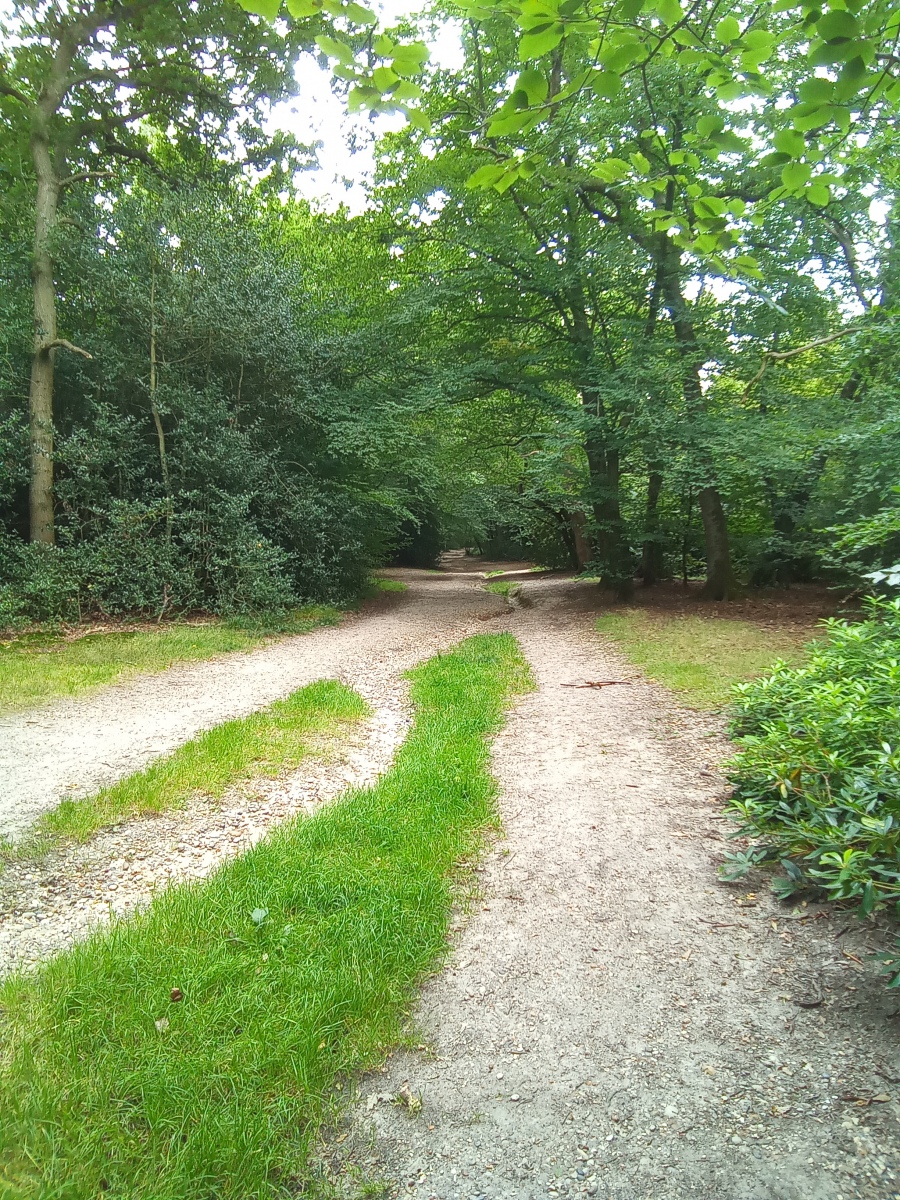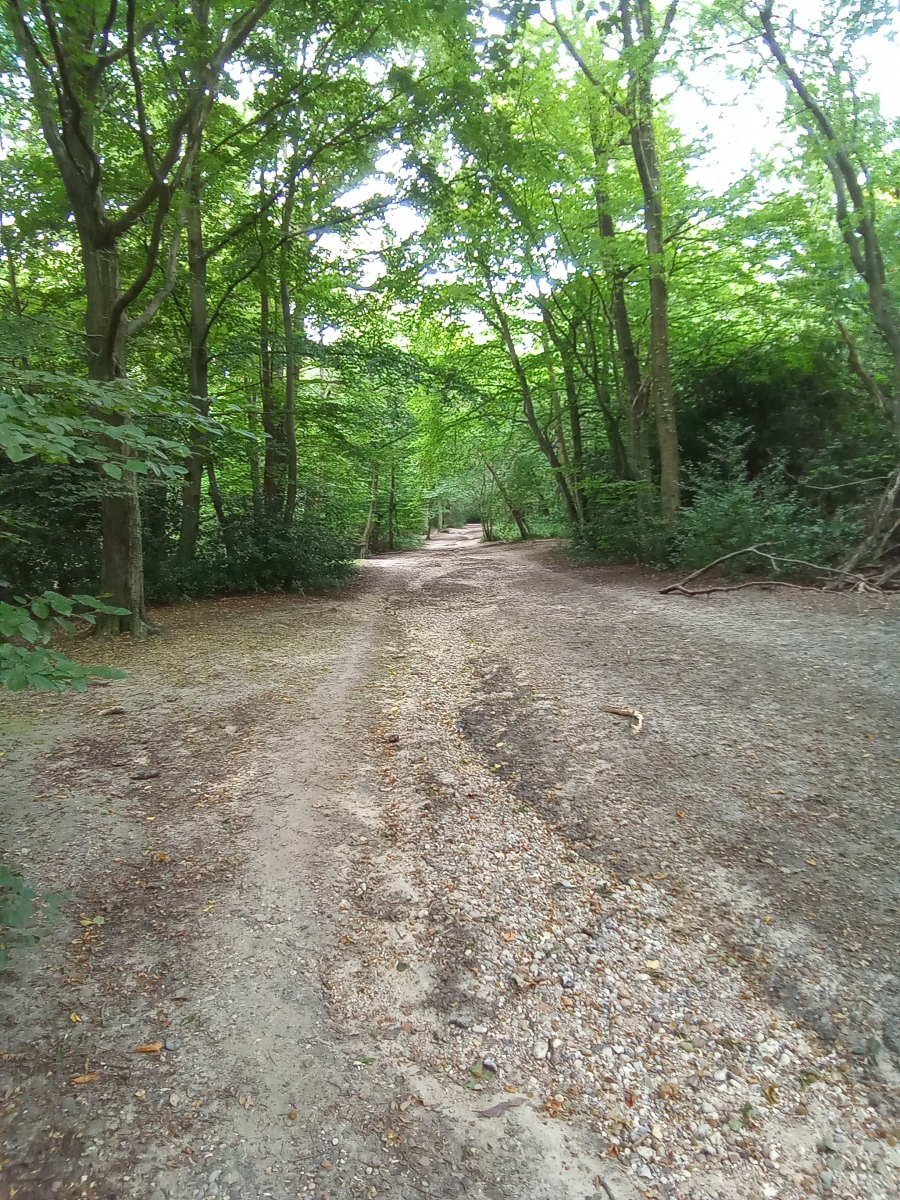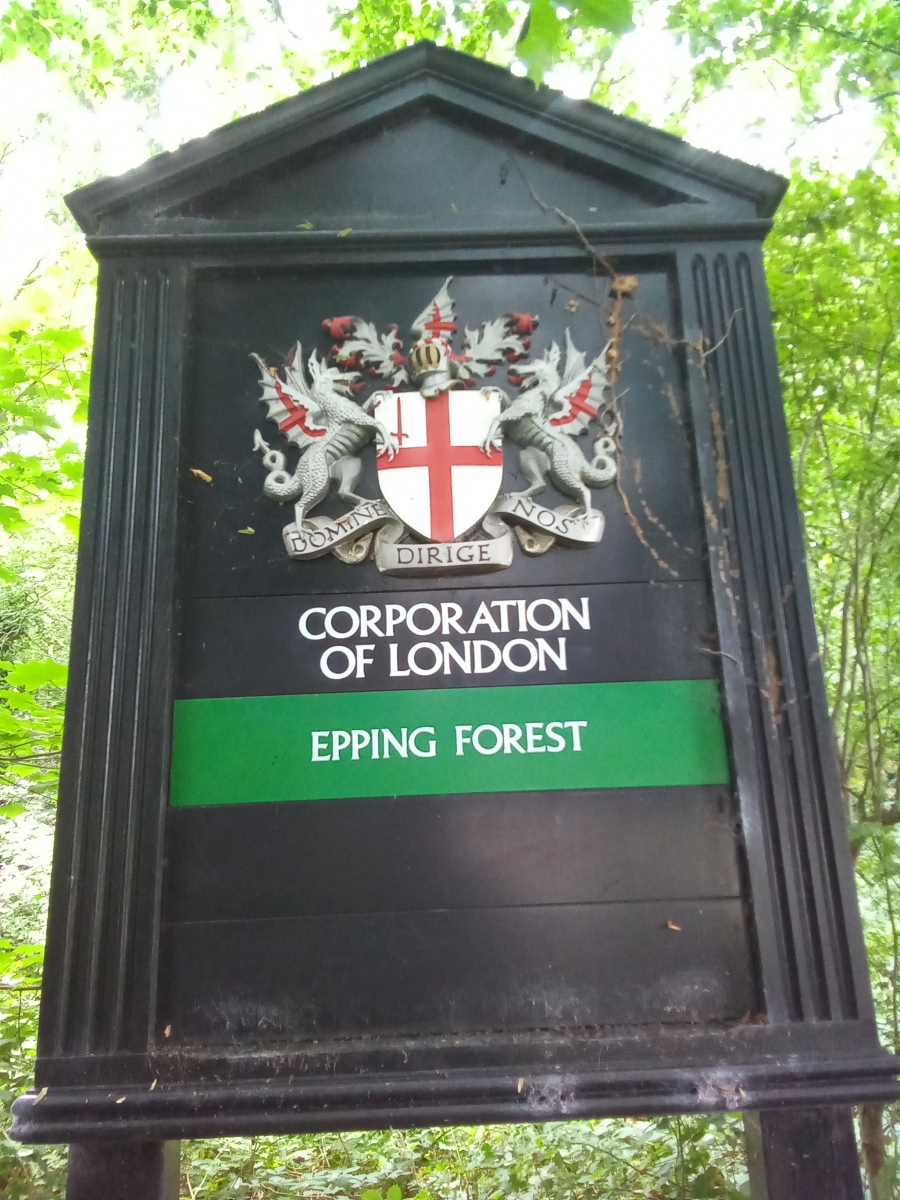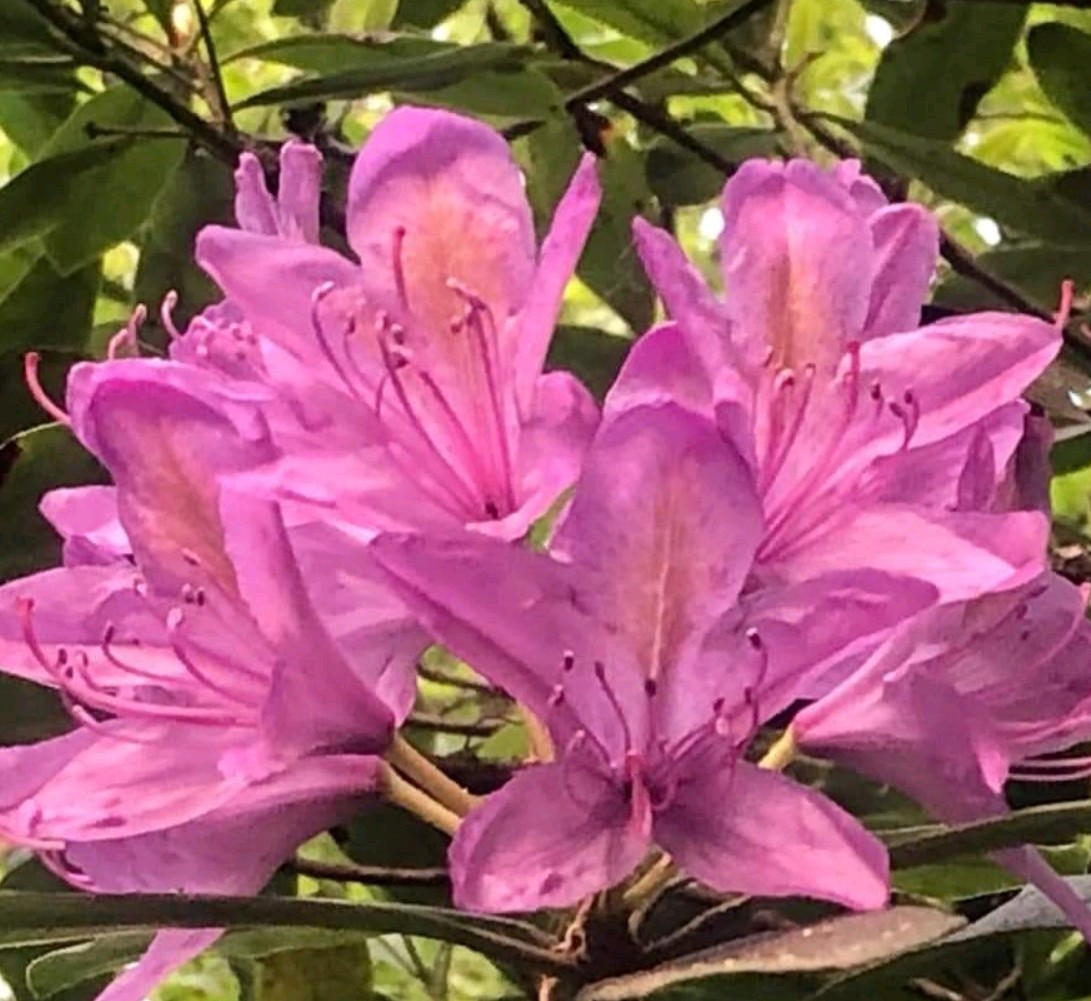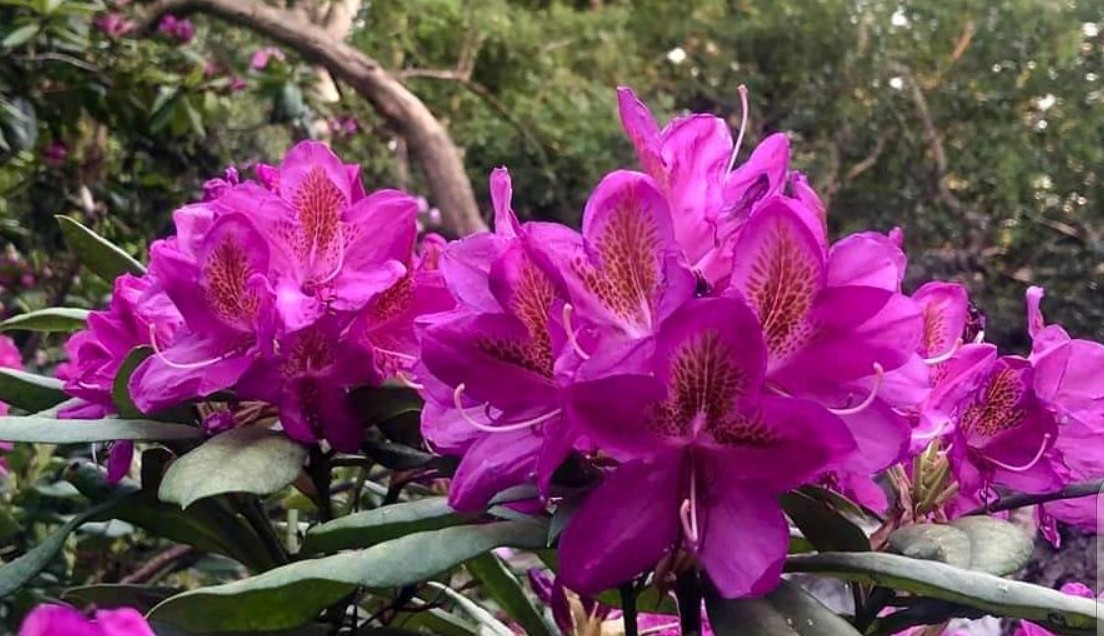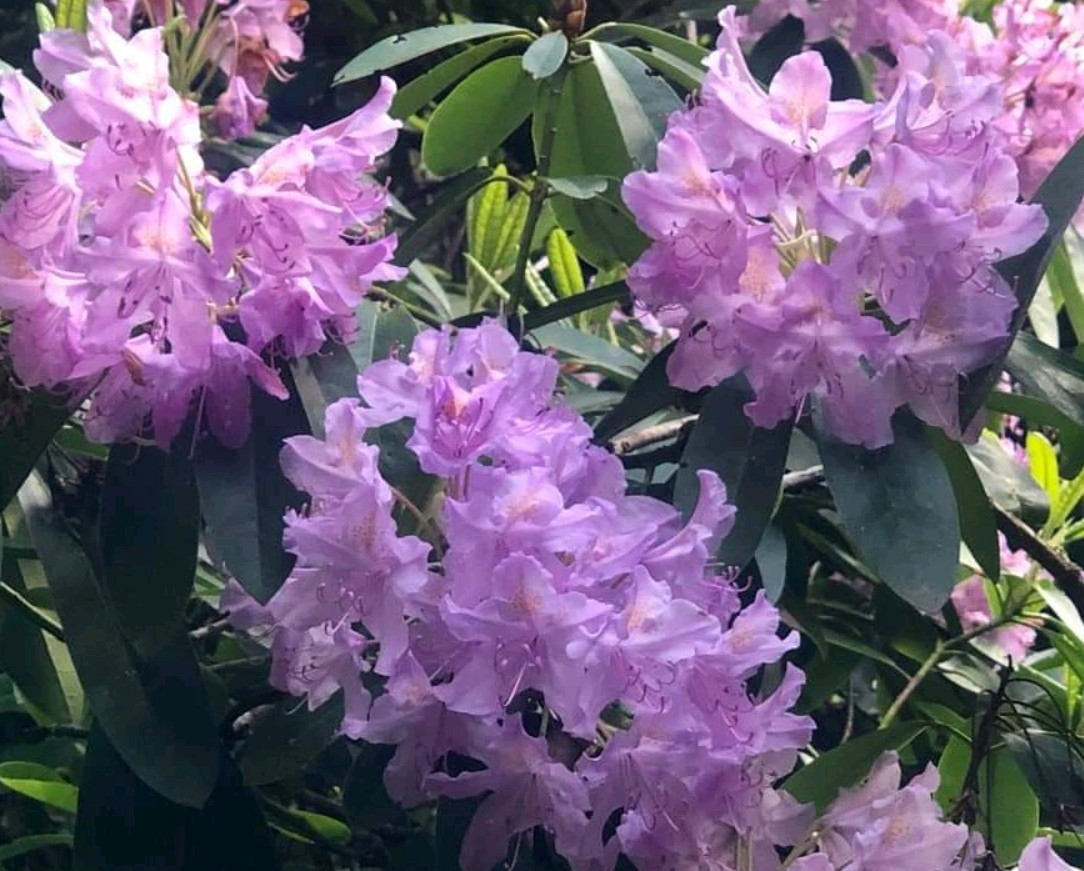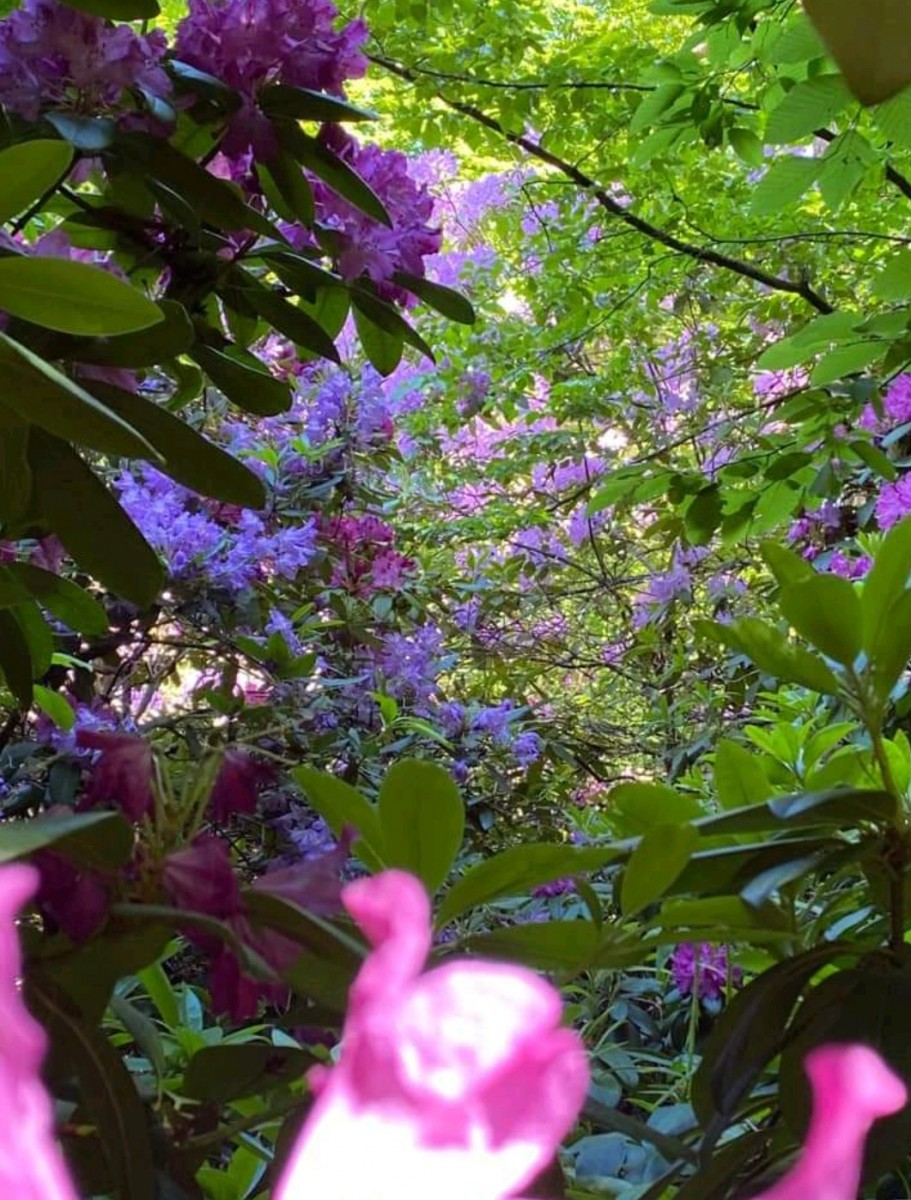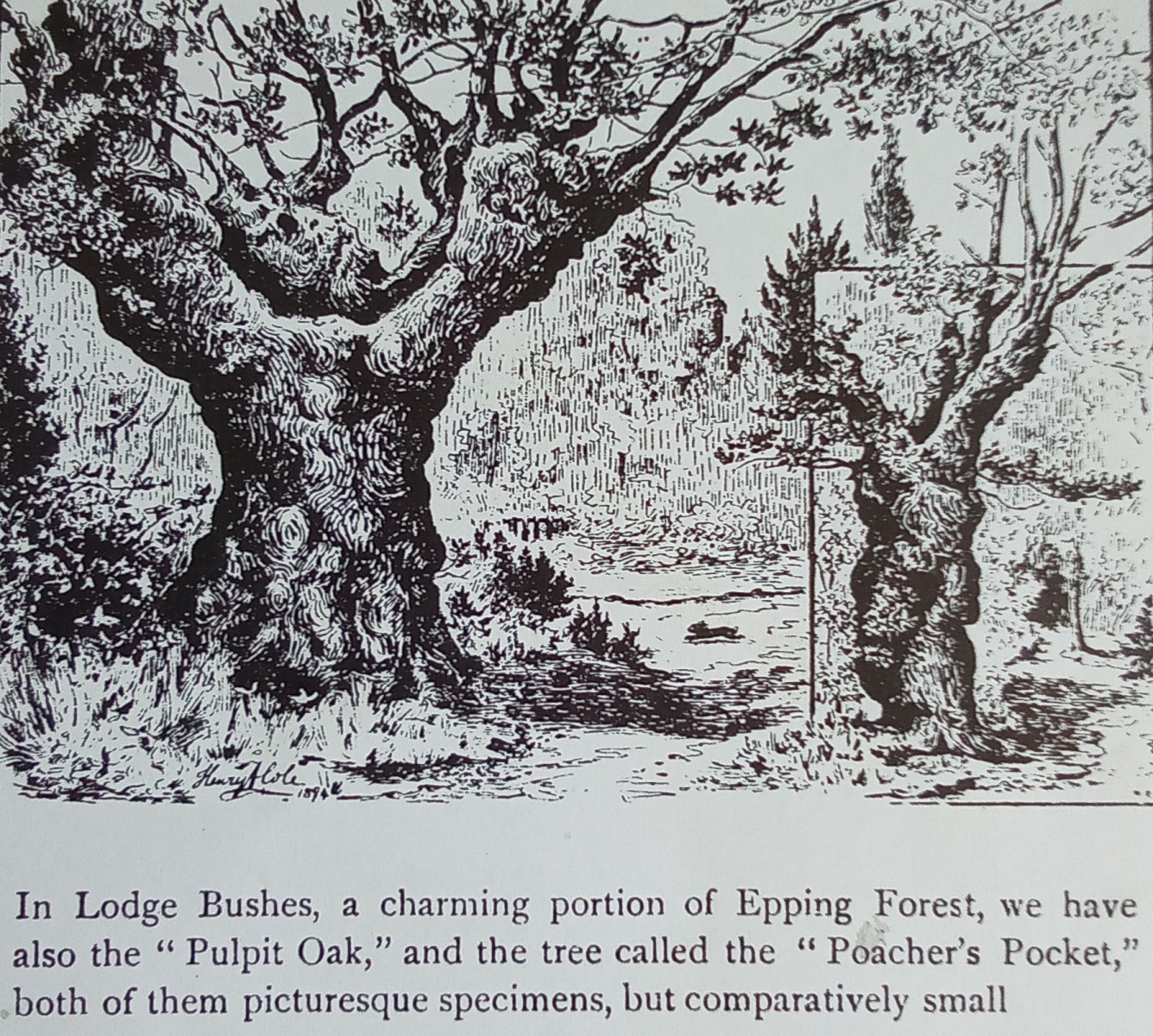
Knighton Wood and Lords bushes are a part of the ancient forest of Essex which sit in isolation from the main body of the forest and have come under more than one ownership over the centuries. The name Knighton is believed to be derived from the Knights of St John of Jerusalem who once held ownership of land here. Lords Bushes is believed to be a corruption of Lodge Bushes in reference to a 17th century hunting lodge which once stood here. This land was once much more extensive and the area now occupied by the Holly private hospital was once part of Lords Bushes. A tell tale clue here is that some of the huge Oak trees growing along the pavements of Knighton Lane appear older than the surrounding development. Historic records survive refering to this land as woodland pasture as far back as the 11th century. An ancient drovers route named Squirrels Lane once ran east from here crossing a ford over the river Roding to Luxborough Lane. The course of this route can still be traced on maps roughly aligned with Walnut Way before crossing Buckhurst Way, Chestnut Ave and Hornbeam Road then across the railway just before the viaduct and finally aligning with the bottom of Luxborough Lane where the ford over the river Roding would have once been. There is now a pedestrian footbridge here linking the two sides of the river at what has been an important crossing point for centuries.

Ordnance survey map credit to Essex County Council https://www.essexhighways.org/getting-around/public-rights-of-way/prow-interactive-map
The Knighton estate passed through several Lords of the Manor before In 1878 Lords Bushes was bought by the City of London Corporation for the recreation and enjoyment of the people. Knighton Wood itself was enclosed from Lords Bushes in the 18th century and remained privately owned until 1931 when the woodland was returned to Epping Forest. Before then much work had been done to create fine pleasure gardens of the woodland by previous owners most notably Edward Buxton, author of Buxton’s Walks and instrumental in the Epping Forest Act. The lodge house of the Knighton estate still stands today as a beautiful thatched cottage on the corner of The Glade opposite Bancroft’s school. Remnants of the gardens remain as several ornamental features and a number of imported plant species particularly the Rhododendrons which give a stunning display in spring.
An area of woodland called Monkhams Wood once stretched further south towards the cricket ground at Woodford Wells and maps from the 17th century show that along the southern edge of Knighton Wood adjoining Monkhams Wood there was a small stream dividing the two woodlands starting at a mineral spring (Woodford Wells) which continued east to the river Roding. Part of this stream still exists but it is now mostly culverted and runs along an obvious dip in the land below the side streets before crossing beneath the railway on its way to the river, resurfacing again along the northern boundary of Ray Lodge park before entering the river Roding.
At one time Knighton Wood sat on the boundary of the parish of Chigwell but the central pathway through the wood now roughly marks the boundary between the London Borough of Redbridge and Essex. It was along the route of this path that secret tests were conducted in the early 1870’s for the prototype of a new kind of steam tram which would run on an experimental track through the wood. During tests the engine successfully pulled two carriages carrying dozens of passengers along the track. This was intended to be shipped overseas to Portugal and was tested here because the gradient in Knighton Wood was similar to that of Lisbon in Portugal where the steam trams were going to be sold. There are reports that the steam ship scheduled to carry the first prototype engine sank in the Thames estuary delaying shipment, some records show another sank in the Bay of Biscay.
To the east of the wood on Monkhams Lane was the grade II listed Little Monkhams House on the neighbouring Monkhams estate. The house featured in a 1980’s children’s television series called ‘Tales From Fat Tulip’s Garden’ narrated by Tony Robinson which was filmed inside the house and its gardens and on location at Knighton Wood. Little Monkhams fell into disrepair after being bought for development and mysteriously burned to the ground In 2007 after a planning application to demolish it and build a block of flats was rejected. All that remains today are the chimney stacks of the house behind some weathered hording. There was much suspicion regarding the cause of the devastating fire at what was once thought to be one of Woodford’s oldest dwellings, parts of which are believed to date as far back as the 14th century. The official cause of the fire was recorded as an electrical fault, although some locals believe the property was not connected to the mains at the time and an appeal hearing of the rejected planning application was due to be heard either the very same day as the fire or on the following morning. This perhaps makes the timing of the tragedy somewhat curious at the very least. No development ever took place at Little Monkhams and nature is now smothering the ruins which are increasingly difficult to see at all behind the hording from the roadside.
Previous studies by the Essex Field Club show that fire has not always brought tragedy to this corner of Epping Forest. After being heavily exploited for natural resources in its earlier years, Lords Bushes became a much more diverse habitat for flora and fauna after a series of fires during the drought of 1976. Historic research has revealed an incredible wealth of plant and animal species at both Knighton wood and Lords Bushes. Wild Service Tree have been recorded in good numbers in Lords Bushes and these seem mostly concentrated around the site of Squirrels Lane. These are an indicator species of ancient woodland as they only tend to occur where there has been a continuous cover of trees over many hundreds of years. Some of the rarest plants in Essex have been recorded at Lords Bushes in the past but new serveys are needed to establish a recent presence. Older records also survive pointing towards more than one species of wild Orchid, now long since extinct here.
Once surrounded on all sides by farmland, the wooded pasture aspect of Lords Bushes can be traced back centuries and without doubt will have had a human influence. There are several hundred acient trees in both Knighton Wood and Lords Bushes, the most recognised of which is just inside the entrance on Knighton Lane a short distance from the car park beside the central path. Here stands the legendary Pulpit Oak. This veteran tree marks the boundary of the two districts and was believed to function as a rallying post for commoners protesting against forest enclosure and also as a Gospel Oak which people would gather around to listen to sermons. Not far from here in Lords Bushes is believed to be a hollowed out Oak tree referred to as the Poachers Pocket where the spoils of illicit hunting and robberies were once said to be hidden away for safekeeping.
Much like the main forest itself, research by the Essex Field Club shows that Knighton Wood and Lords Bushes have seen their share of illegal encroachment by local landowners leading up to the Epping Forest Act.
There are records of attempts to enclose Knighton Wood in 1572, then again in 1670 and 1781. History shows this was usually met with violent protests by commoners but the final attempt at enclosure appears to have marked the beginning of the future Knighton estate. One previous owner of Monkham House, Thomas North and his wife Mary were brought before the Verderers at court in Chigwell repeatedly between 1737 and 1757 for a whole string of forest related infringements. These ranged from them allowing greyhounds to chase deer, erecting fences preventing the free passage of deer and the illicit felling of trees. Records also show the route from Squirrels Lane leading to the ford on the river Roding linking Woodford with Chigwell was repeatedly obstructed by another local landowner, but this was not considered to constitute a breach as it was outside the jurisdiction area of forest law. At the other side of Knighton Wood between 1779 and 1786 the Inn Keeper at the Bald Faced Stag Thomas Nicholson was brought before court repeatedly for numerous enclosures on forest land and ignored orders to remove them for so many years that by 1787 local Blacksmith Thomas Priest had set up shop in one of the enclosures. Priest himself then went on to commit further enclosures on which he built a cottage, but by 1803 the court eventually decided he could lawfully remain on the land as his enclosures were not considered detrimental to the forest.
Although in recent history the scale of Knighton Wood and Lords Bushes has been greatly reduced by many acres as a result of development, the range of wildlife observed here remains impressive. Countless bird species have been recorded here over a very extensive timeframe and continue to show great diversity. Studies both from nearly a century ago by Edward Buxton, and more recently by the Essex Field Club have thrown up some incredibly surprising visitors including Redshank, Cuckoo, Woodcock and Spotted Flycatcher. In January 1979 large flocks of up to 50 Skylarks were observed flying above Lords Bushes. Amphibians have also been well represented over time with all three native British Newt species recorded. Crested, Palmate and Smooth Newt have all been observed in good numbers in previous studies. At one time Crested Newt were extremely prolific here but sadly are more scarce now. As expected in areas of lapsed ancient woodland pasture, hundreds of invertebrate species have also been recorded here. These findings give a tantalising glimpse of how ecologically rich this location has proven to be even in more recent memorable history.
Today this inland island of Epping Forest cut off by residential streets is extremely popular with local residents for recreation and dog walking. What were once formal pleasure gardens have now been largely reclaimed by the forest and the once familiar grassy plains of Lords Bushes with their exquisite local names such as Jericho plain and Daisy Plain are now much smaller and more densely wooded. Great pride of the wood is taken by many local visitors who can regularly be seen litter picking while visiting what some describe as their beloved Knighton Wood. The wood itself being at its finest in spring when the Rhododendrons left behind In the former pleasure gardens are in full bloom. Some imported non native mature trees can also still be found near to the ornamental ponds along with the less welcome presence of invasive Bamboo. The area is served well by public transport and parking is available both at Knighton Wood and In nearby residential streets, which as always should be done with consideration. It is also possible to combine this location with other nearby forest walks in Buckhurst Hill for a longer exploration of the area.
___________________
Photographs of Rhododendrons at Knighton Wood kindly provided by Clare Bullen, Lesley Midda and Susan van Maanen.
The Essex Field Club
The now out of print 1983 Essex Field Club guide: Lords Bushes, The History of an Epping Forest Woodland by M. W. Hanson has been an invaluable source of information while researching for this article. A copy was bequeathed to me from the private collection of a late Loughton resident and academic, for which I am extremely grateful.
A quote from the very first paragraph in the book seems as relevant today as it was at the time of print.
“Since 1878 when Epping forest was ‘safeguarded for ever’ by being given into the care of the City of London Corporation, members of the Essex Field Club have needed to defend the forest against a long succession of threats. The threats have been of three main types: total neglect and lack of management reducing the diversity of wildlife, attempts to take the forest lands to build railways and motorways and over management turning parts of the forest into a neatly manicured parkland”
In reference to the last threat mentioned of neatly manicured parkland, it is perhaps inconceivable that in 1974 the Royal Institute of British Architects envisaged planting non native species throughout Lords Bushes and installing waterfalls and fountains to create a Regents Park atmosphere. Thankfully this never went further than a planning study but demonstrates our need to keep an ever watchful eye on the management of the forest.
Further reading from external sources –
